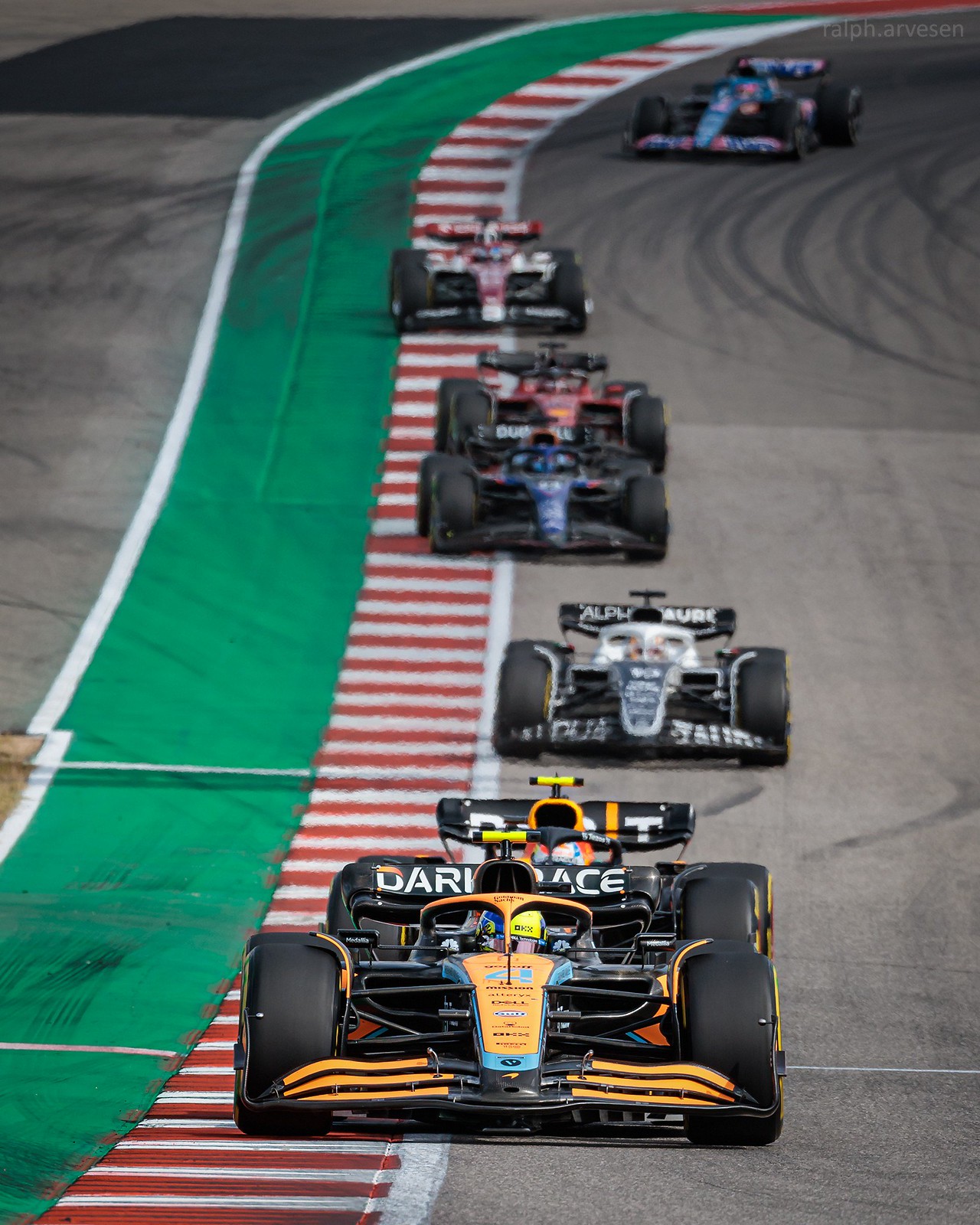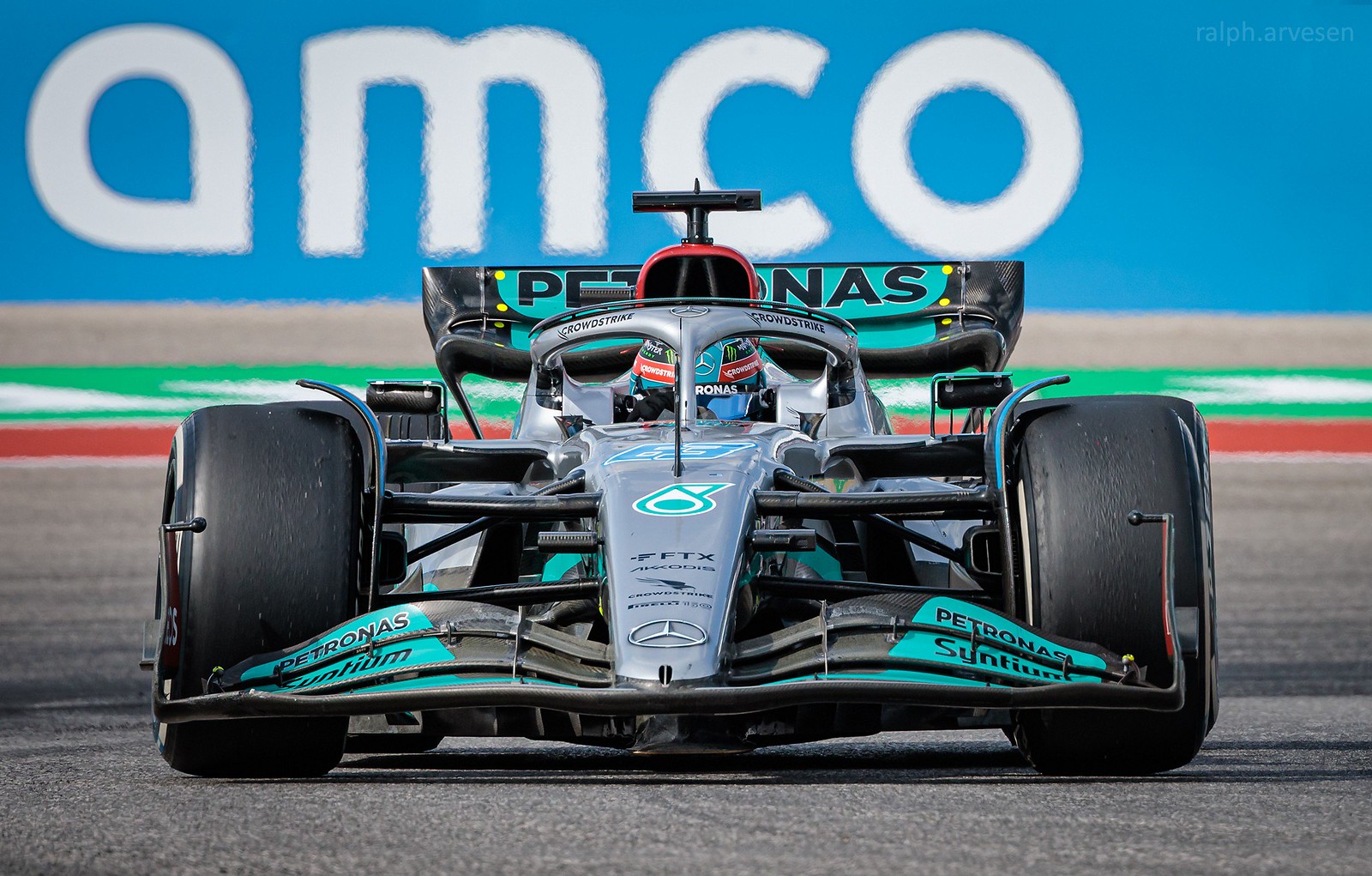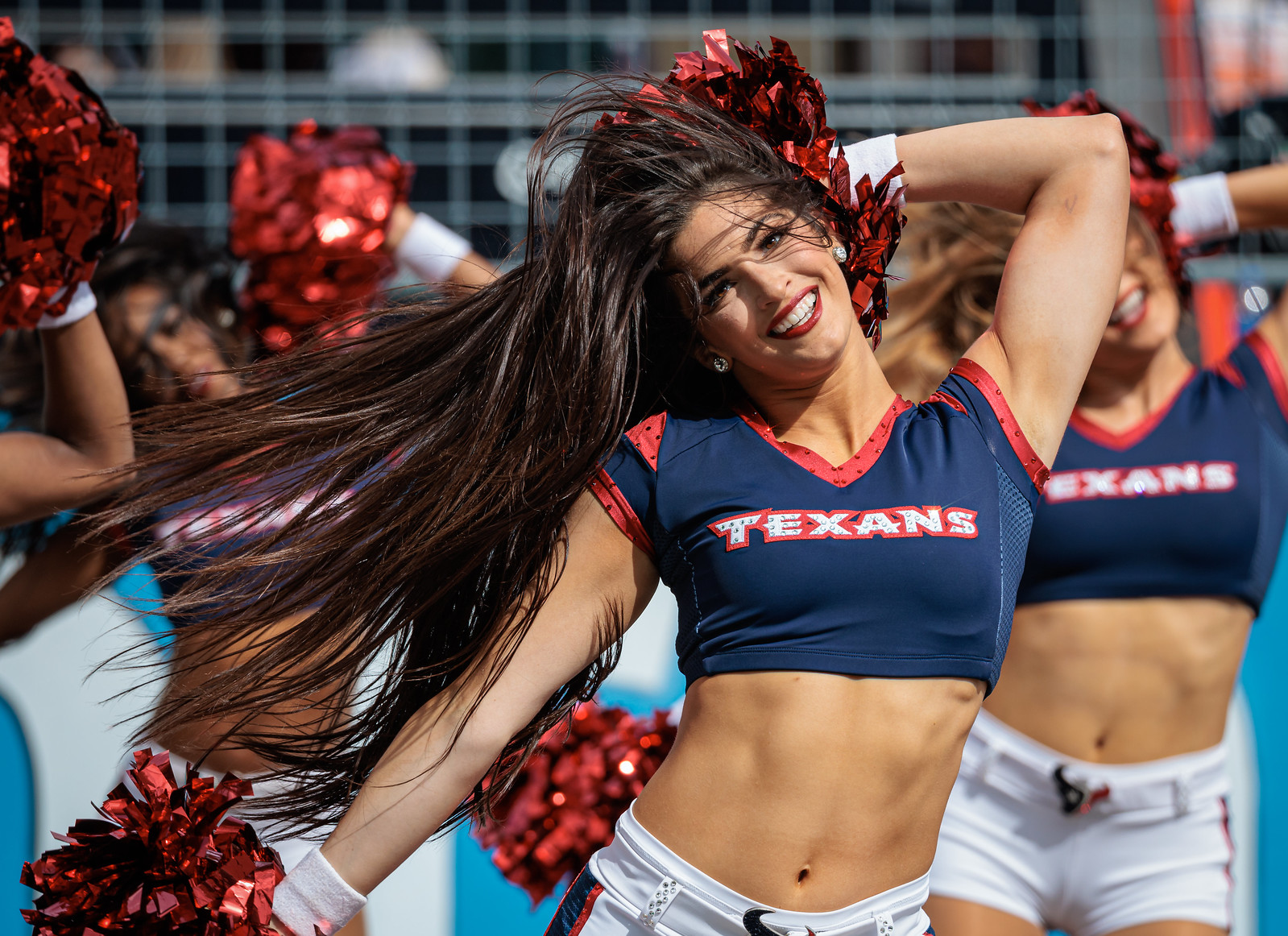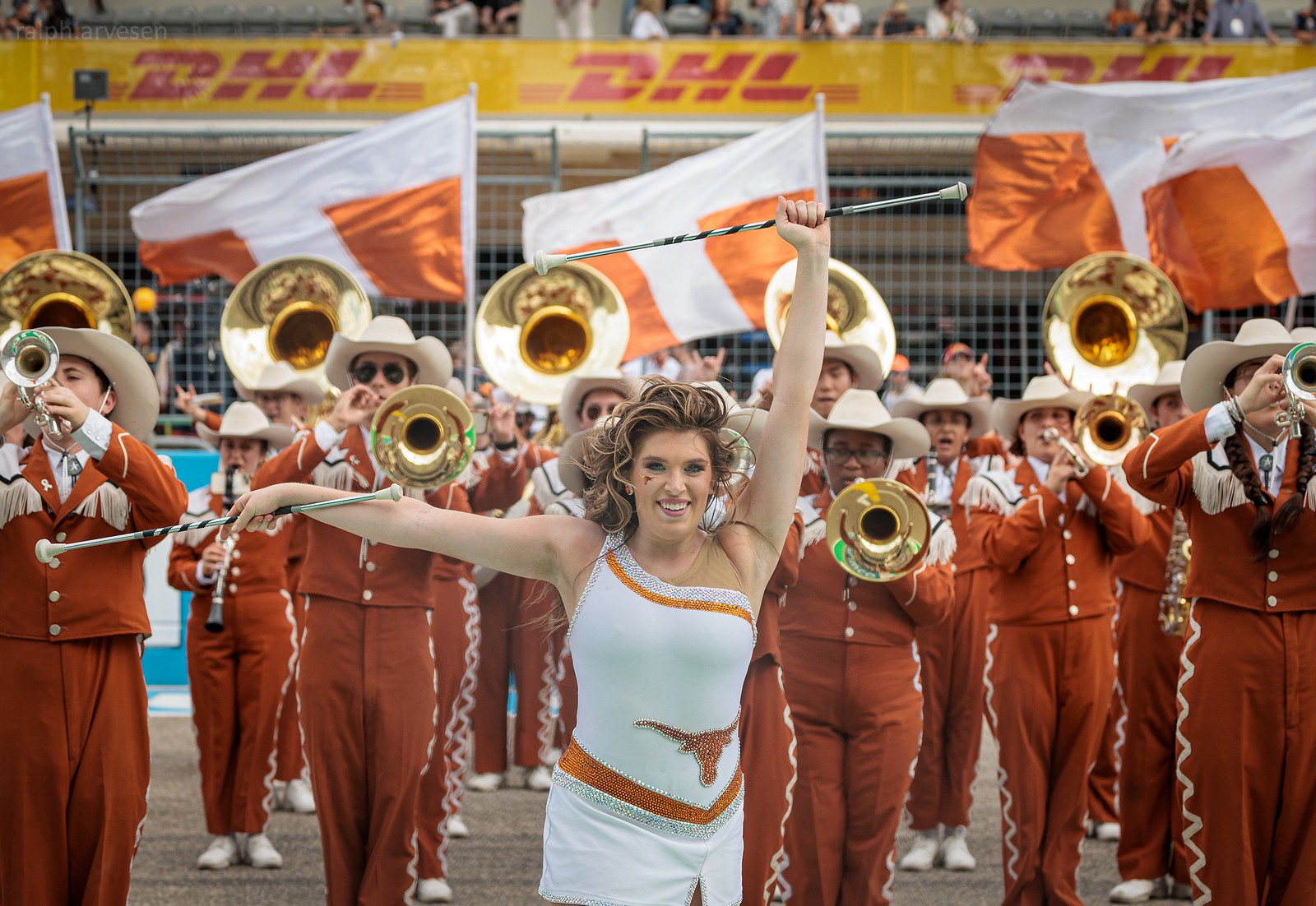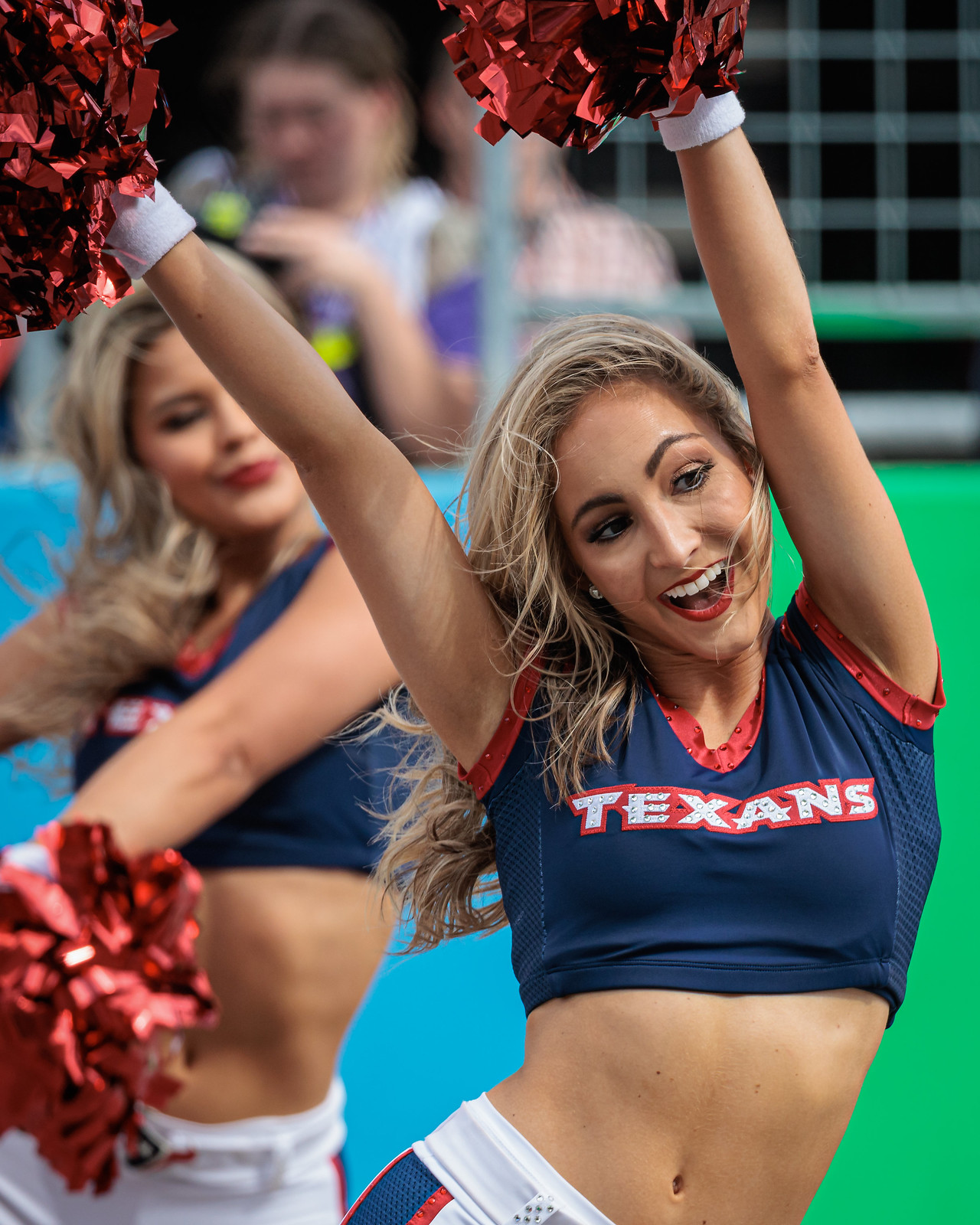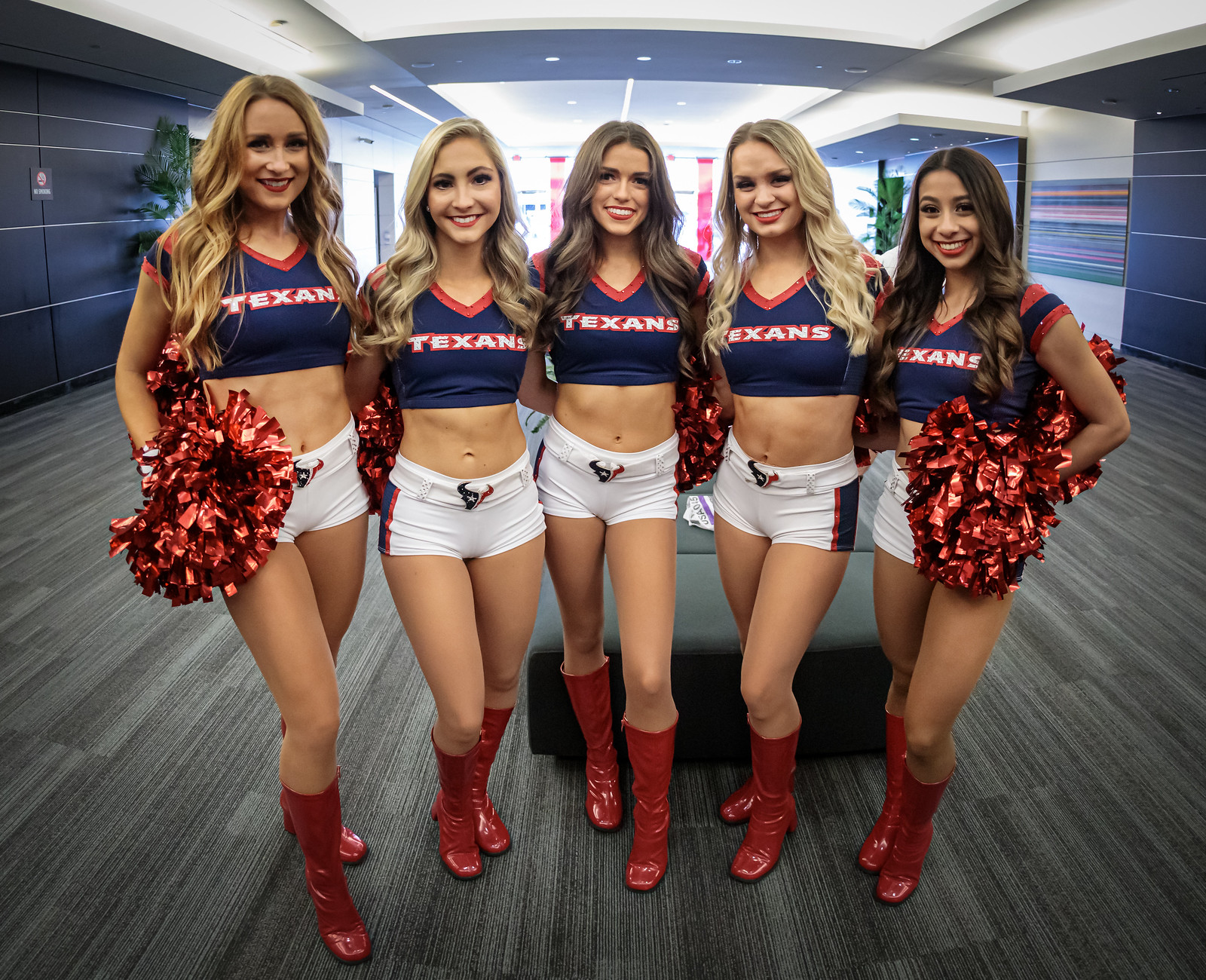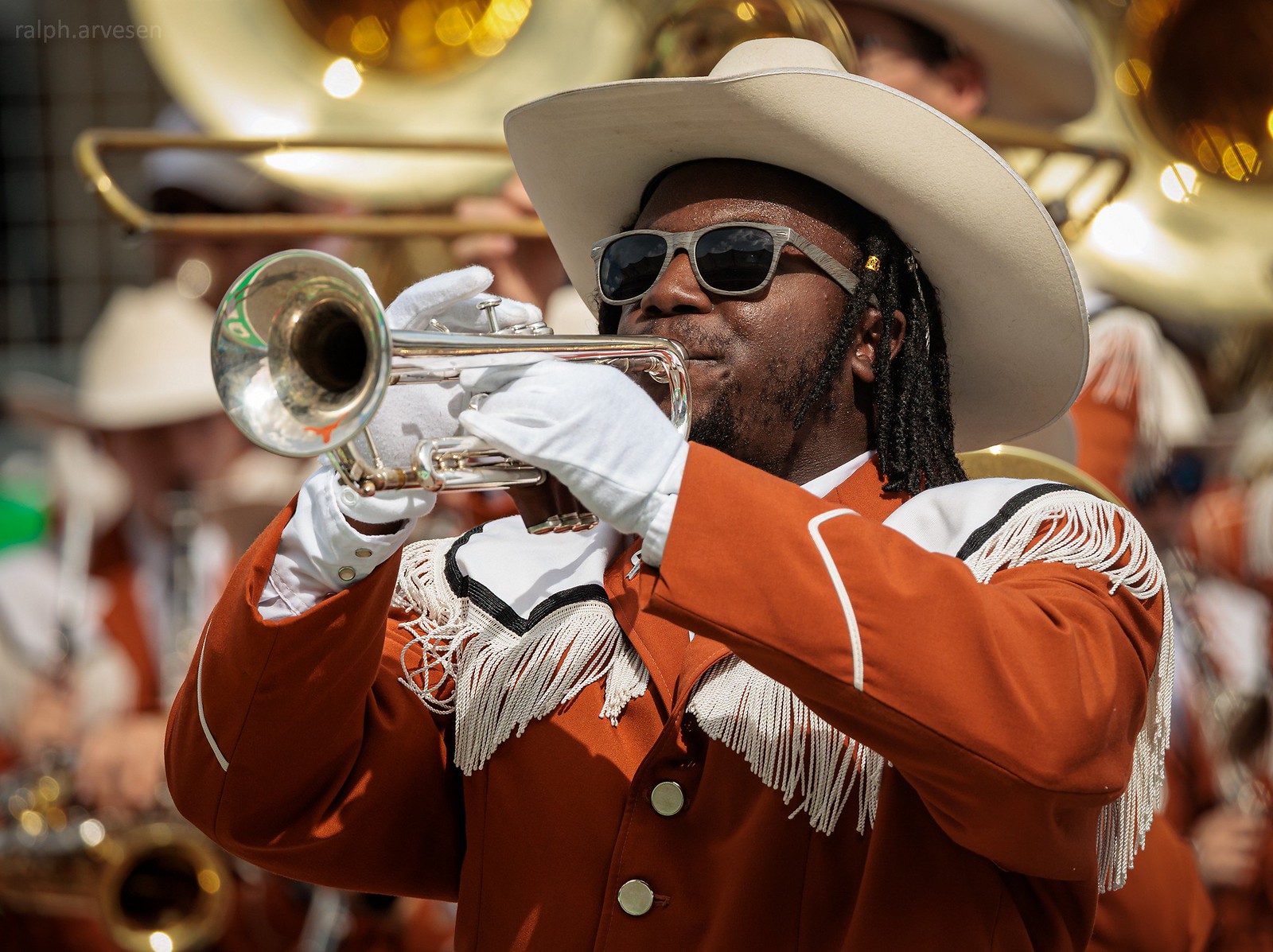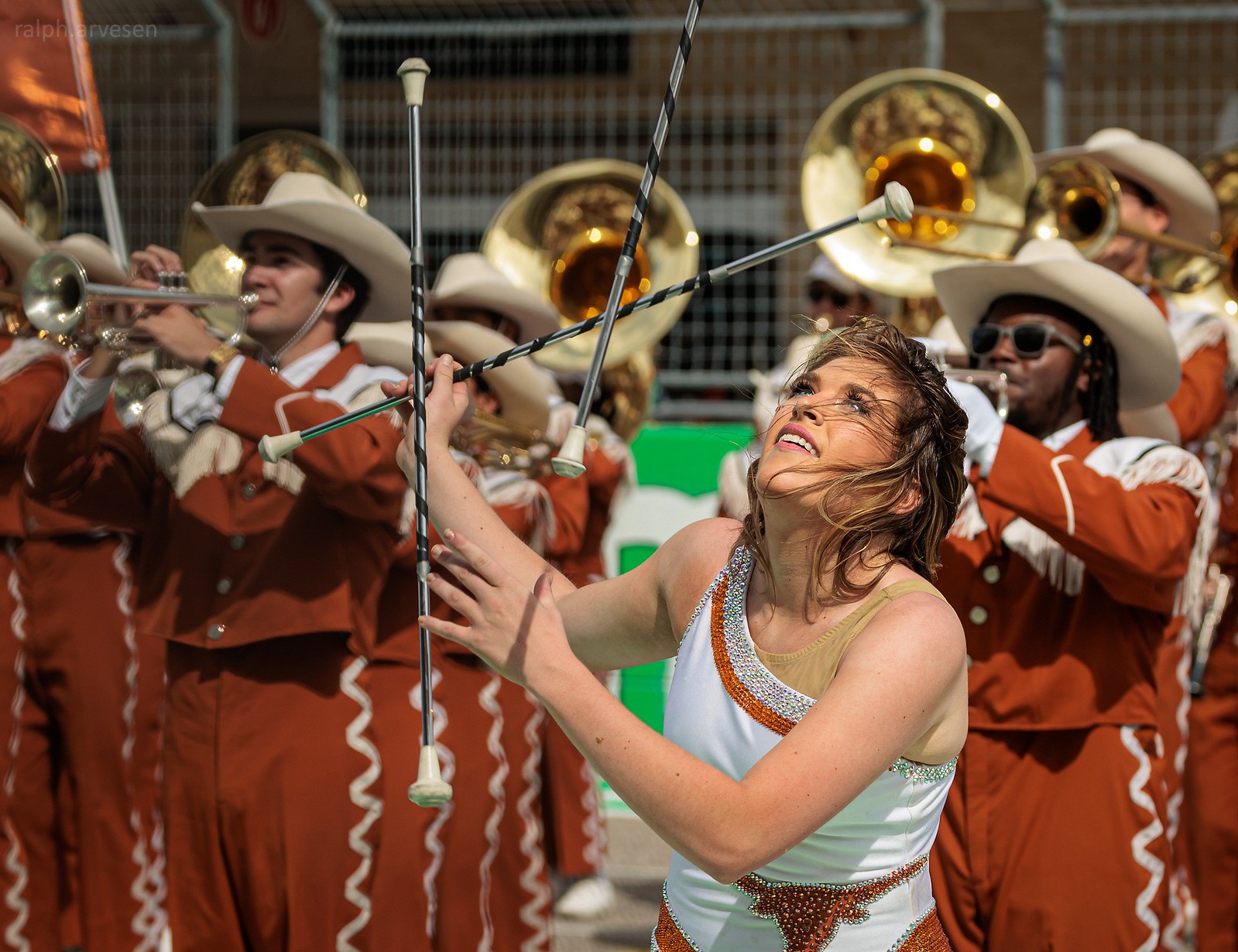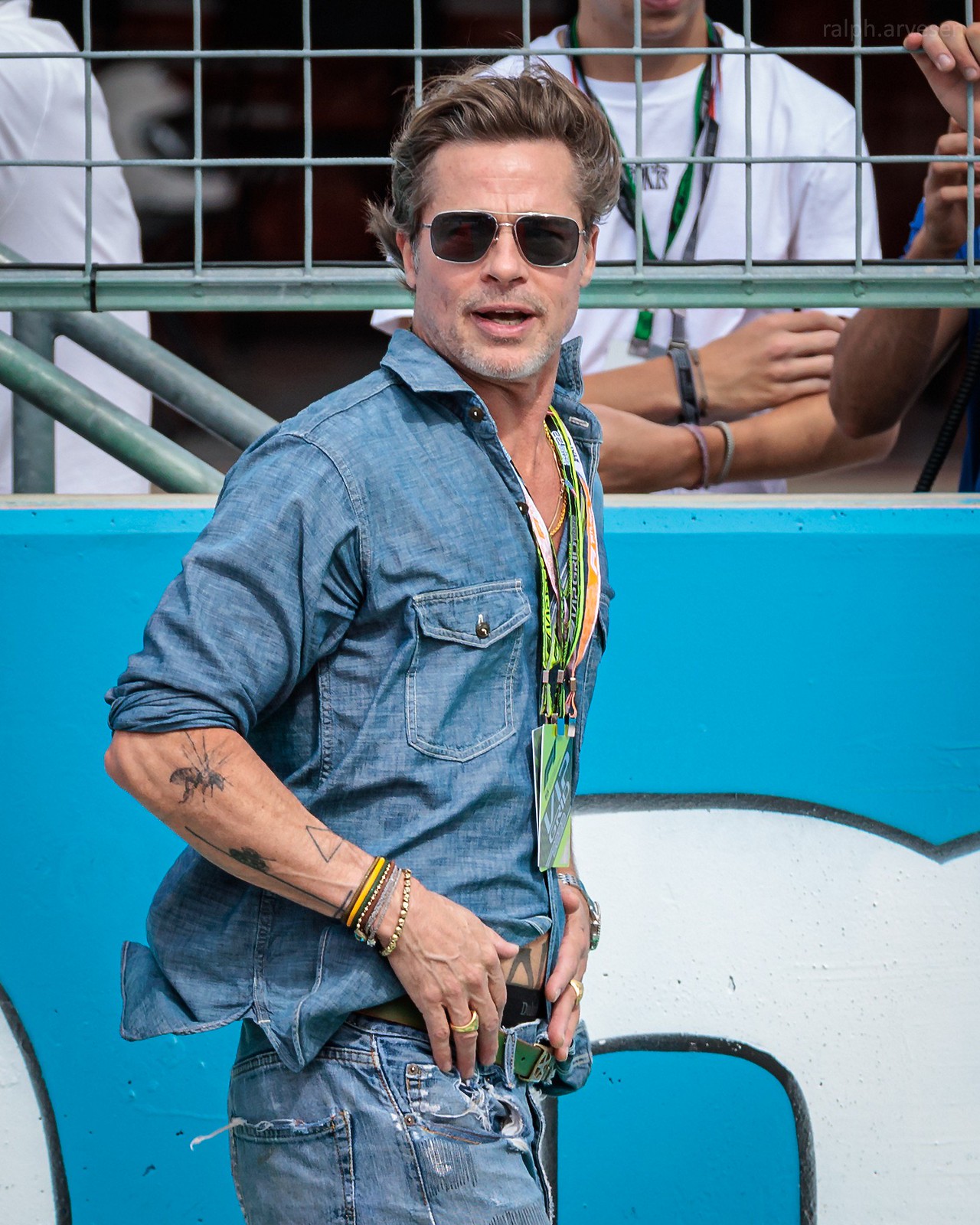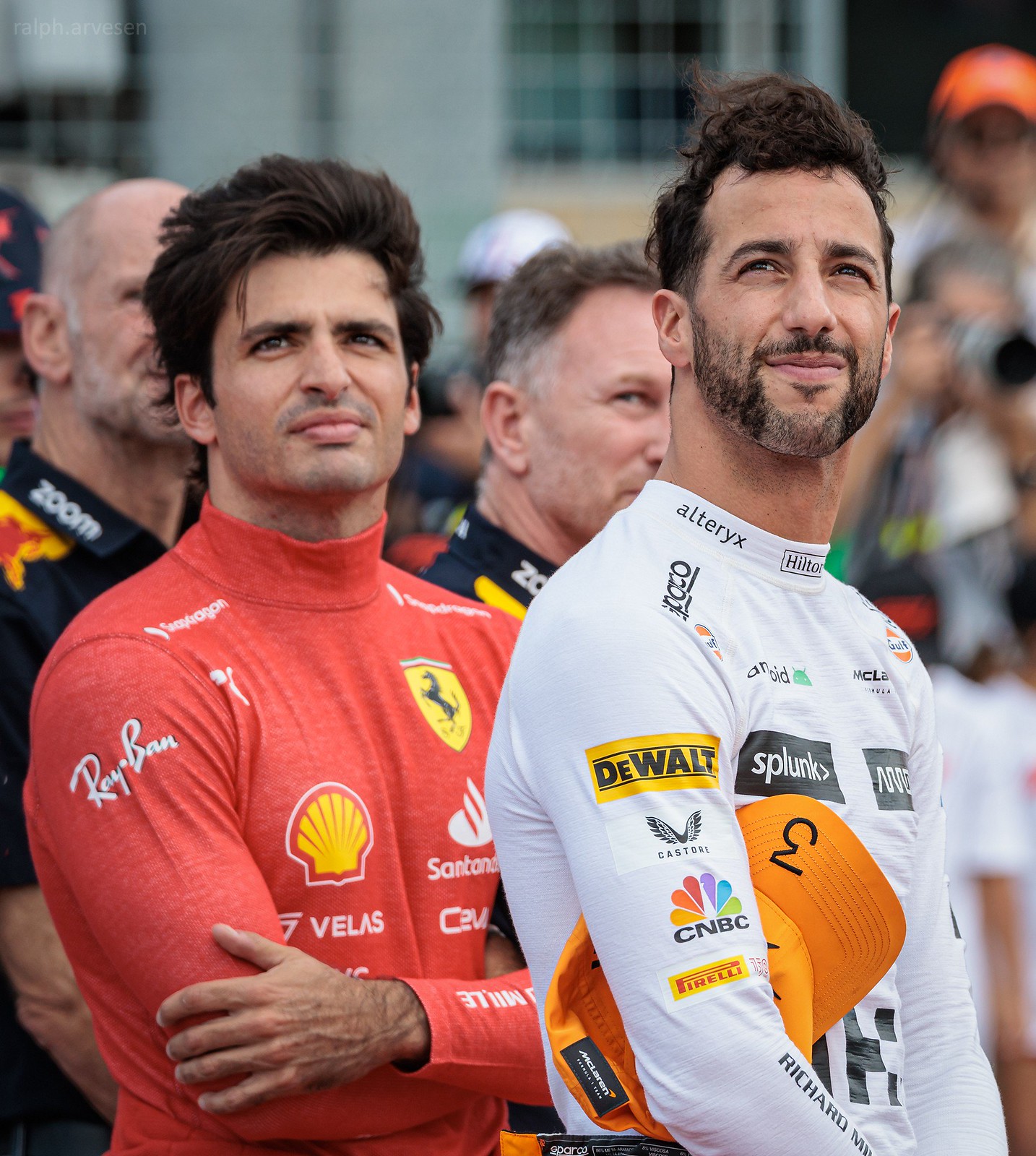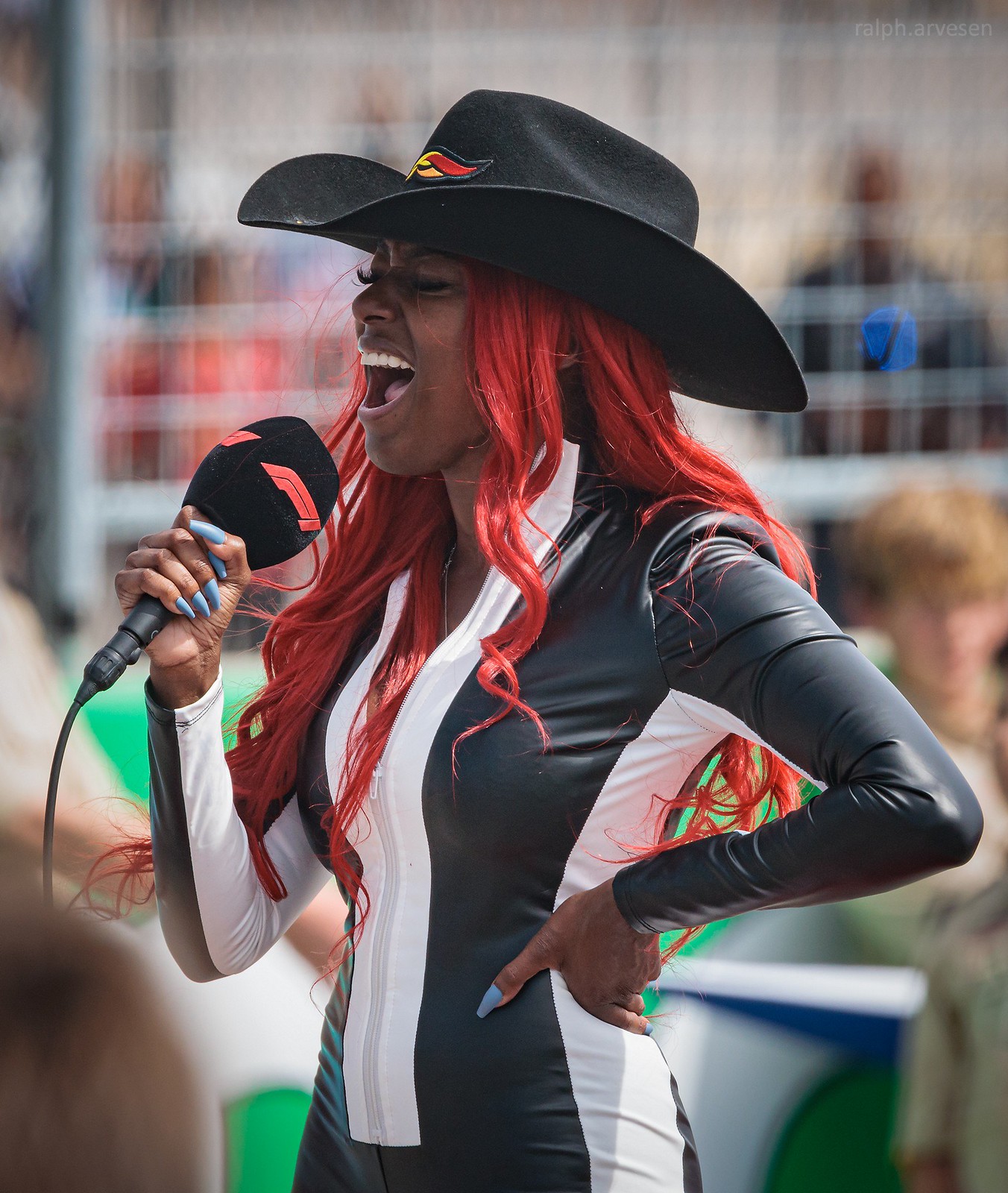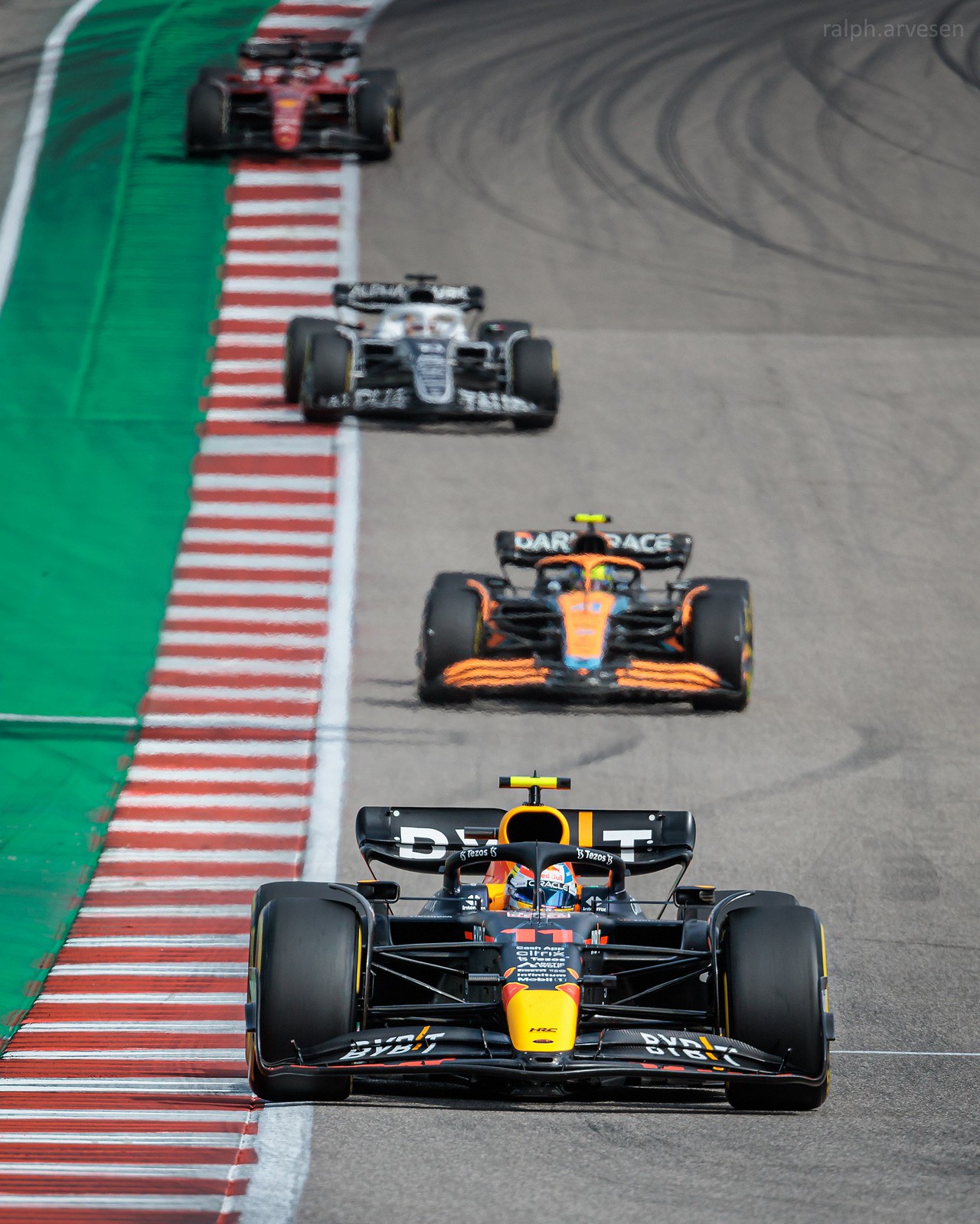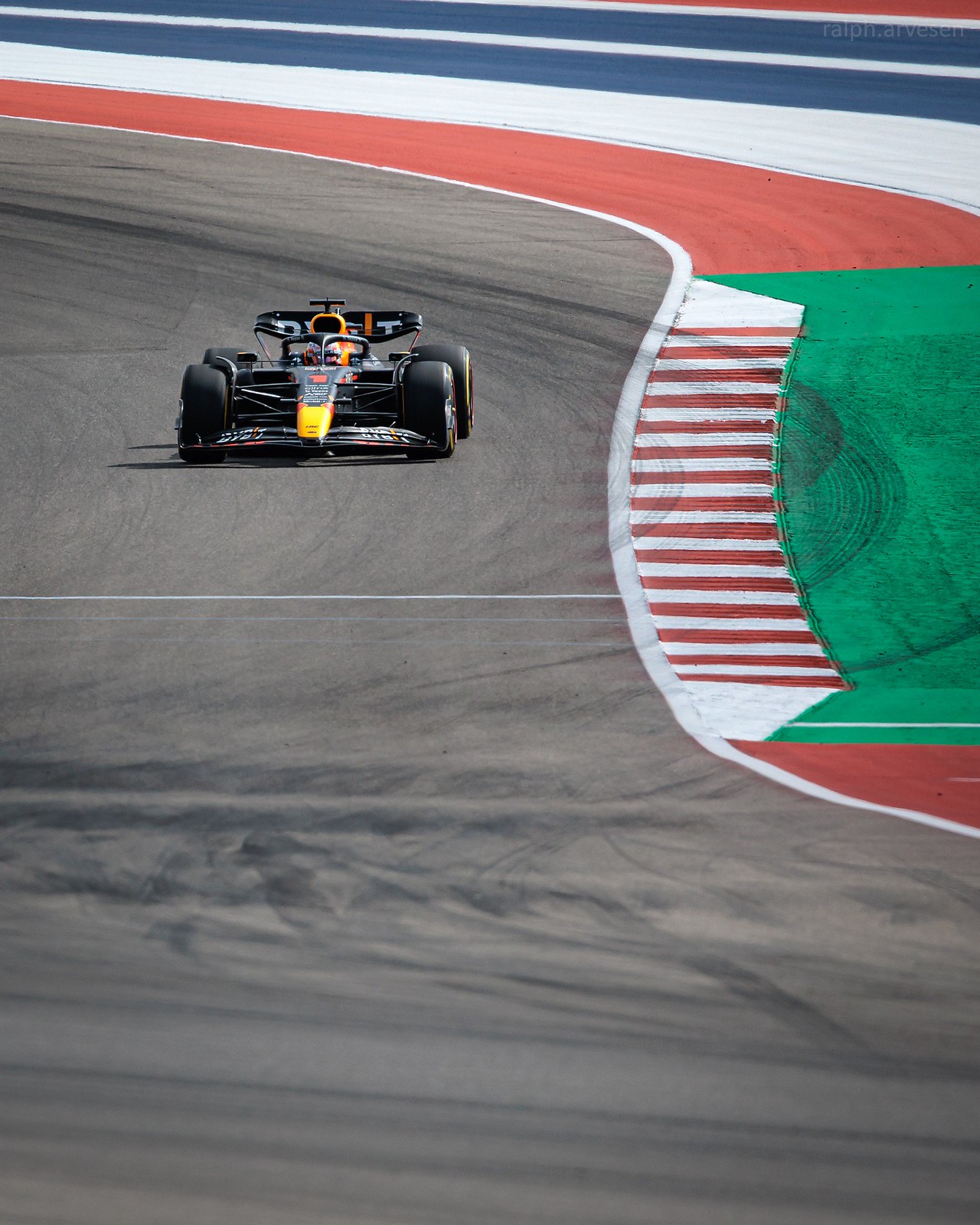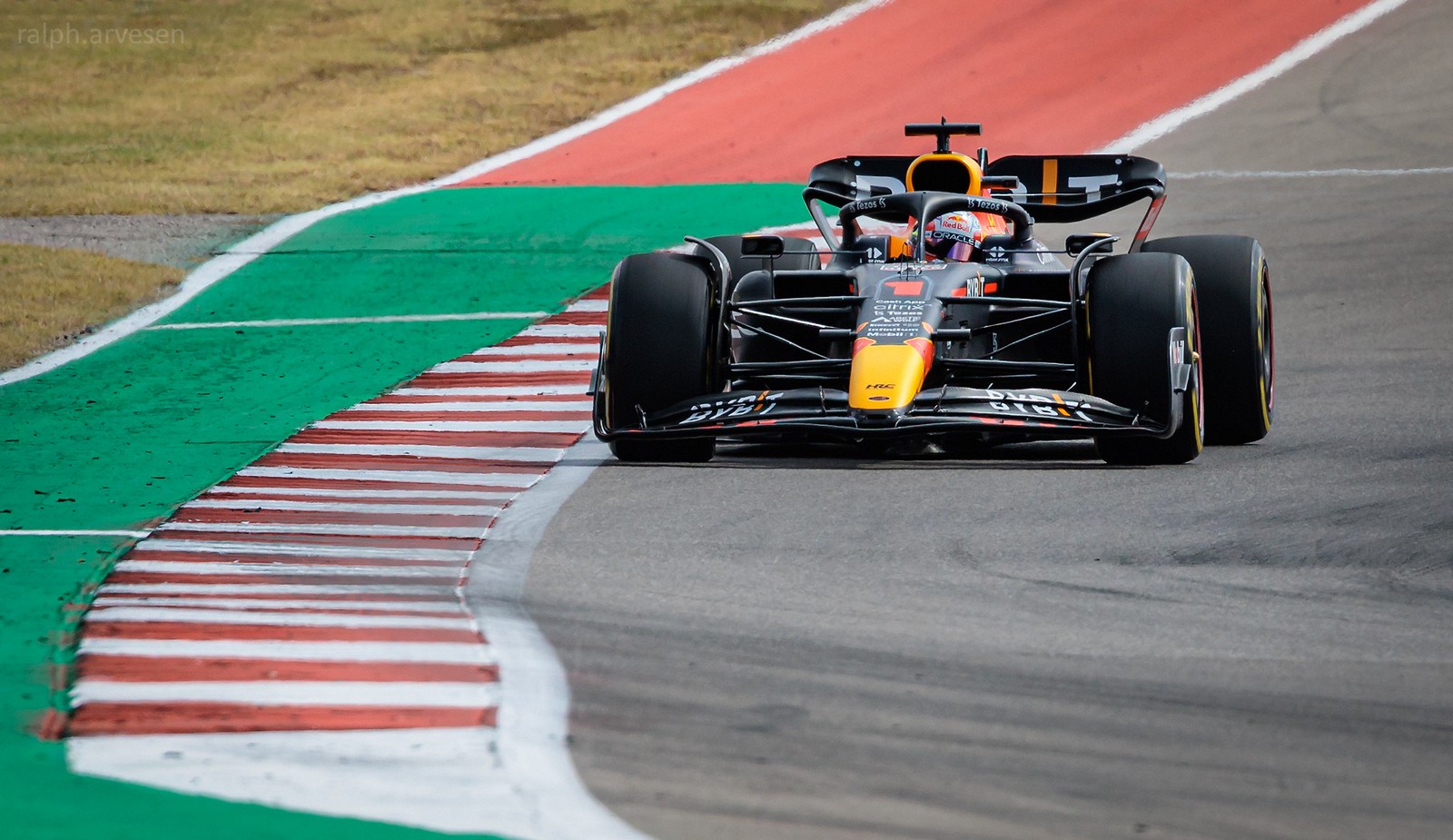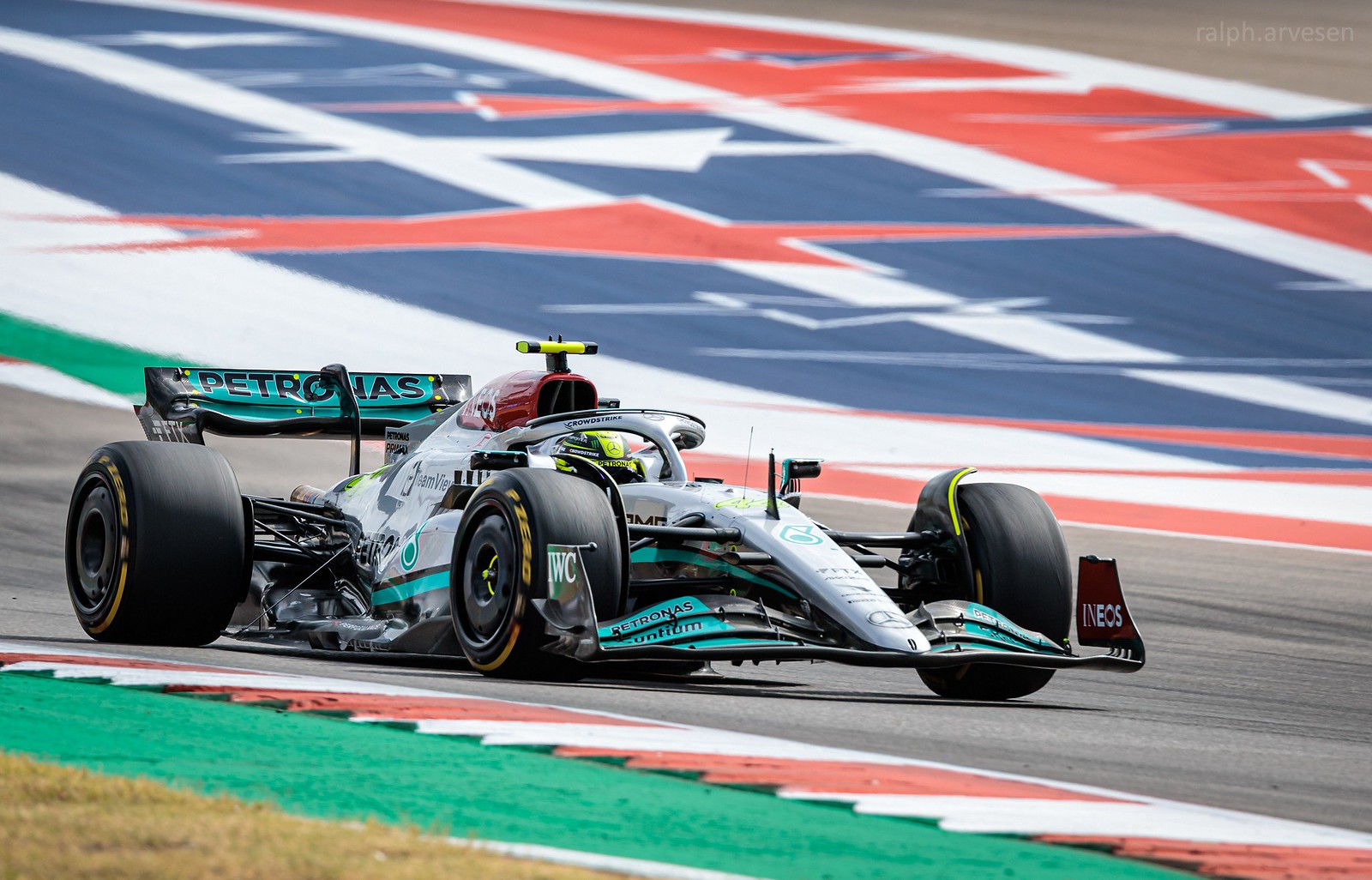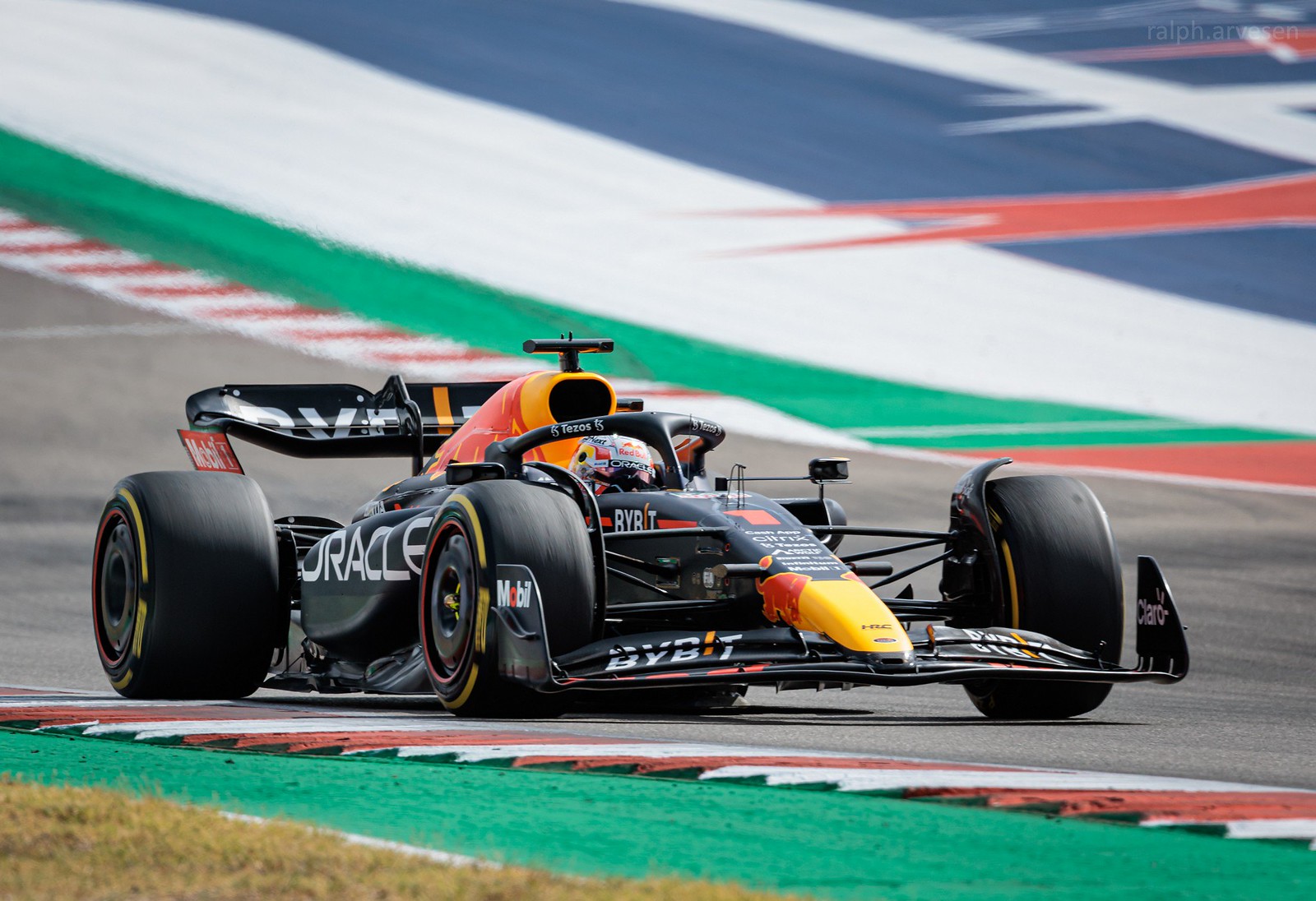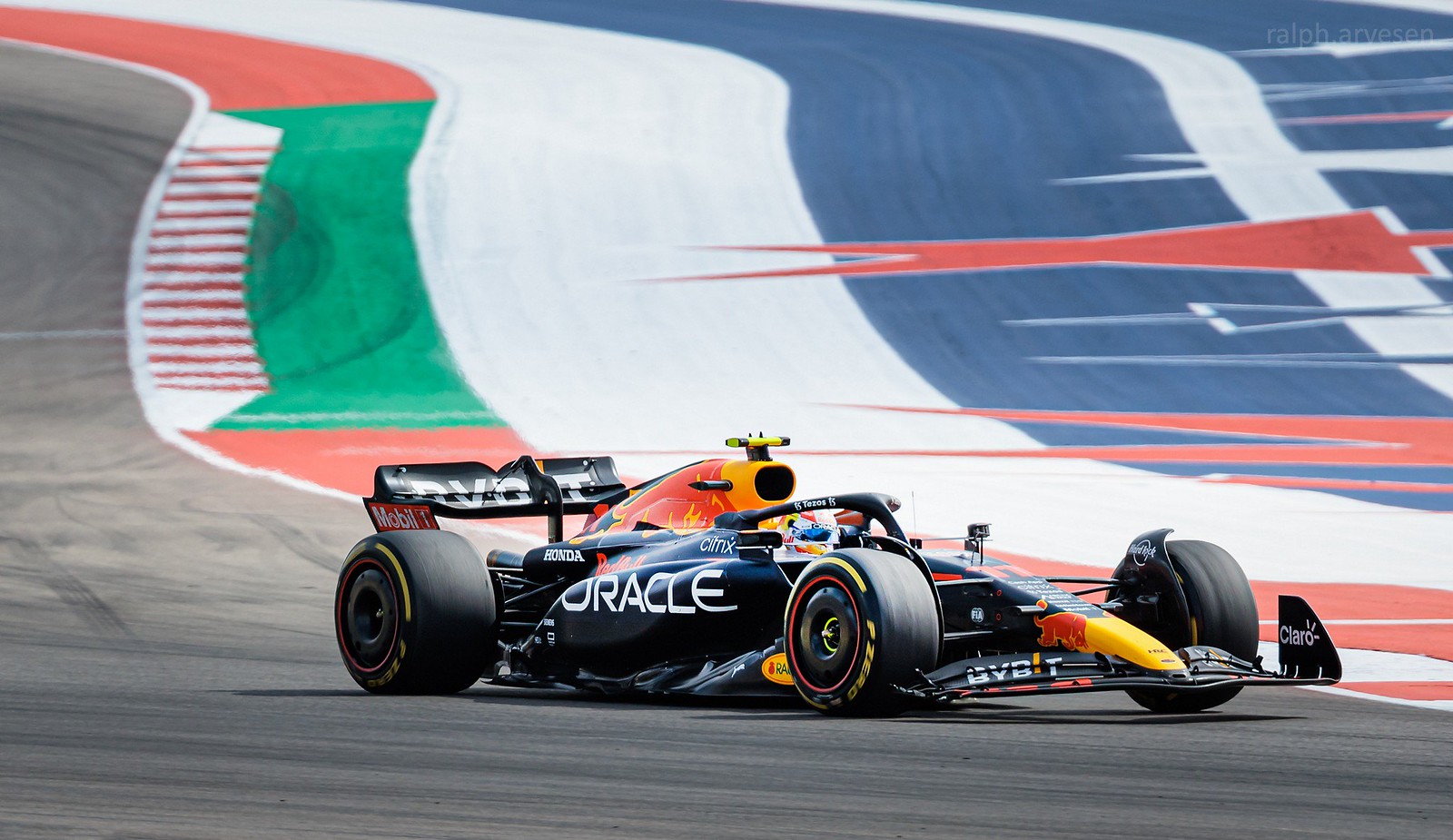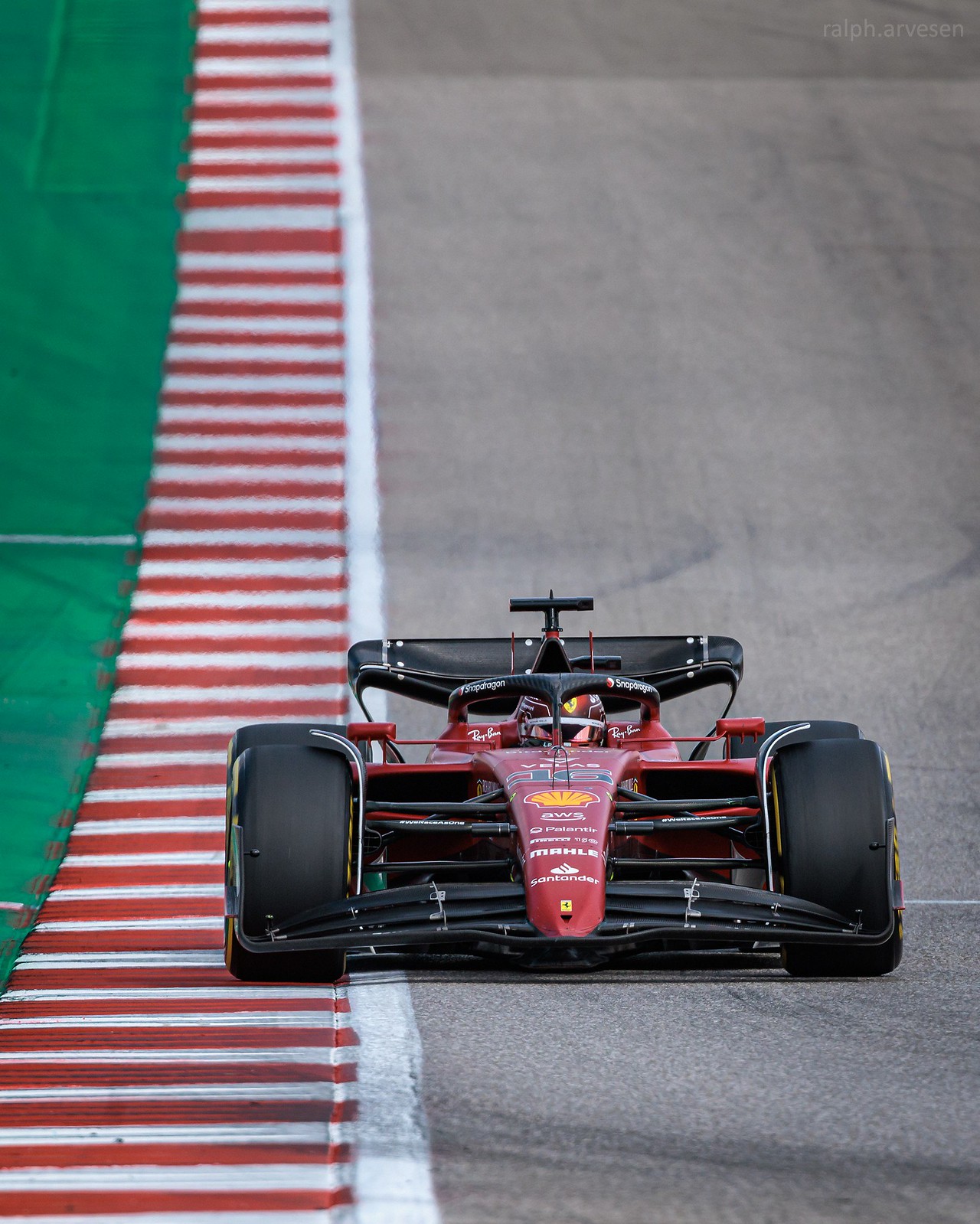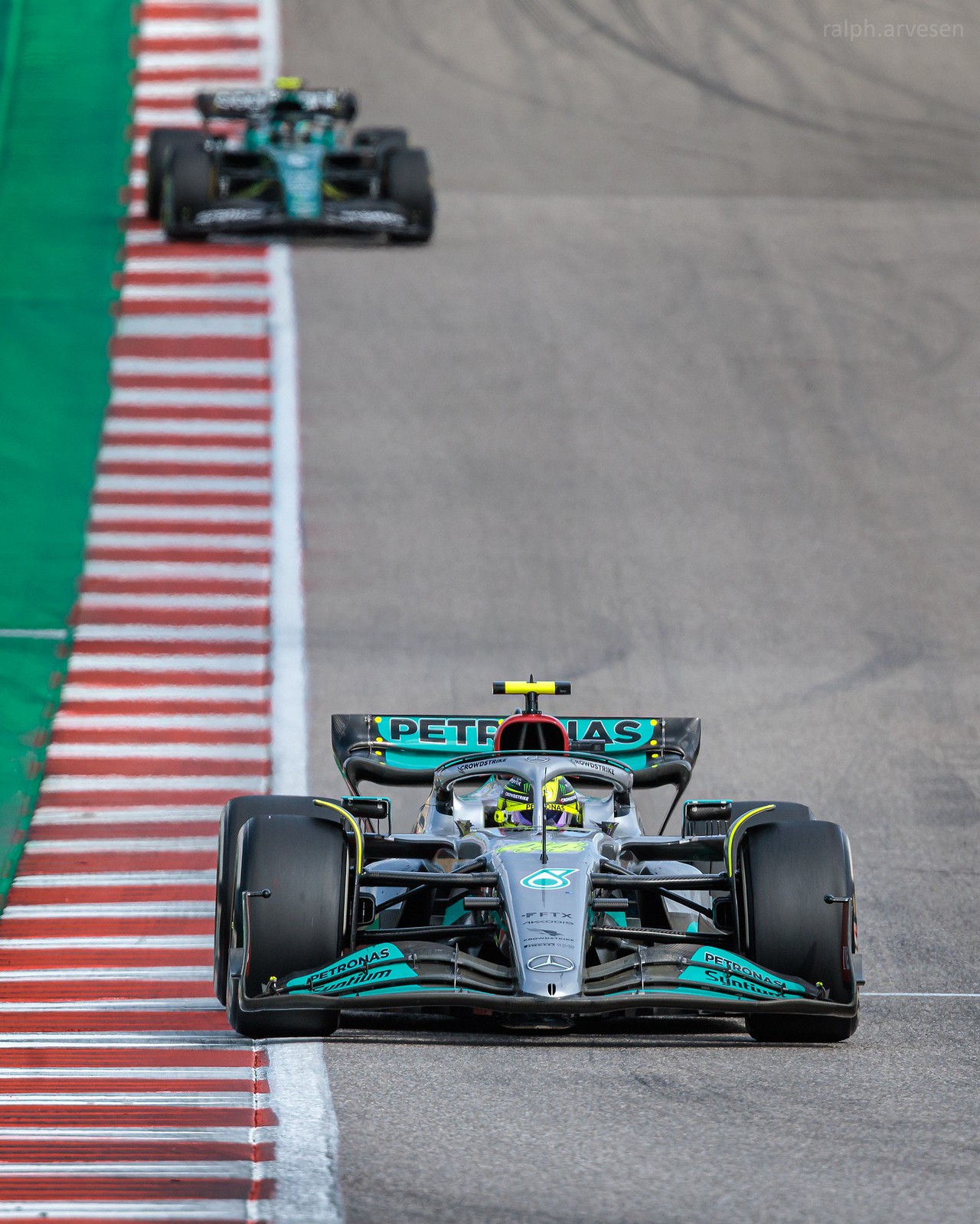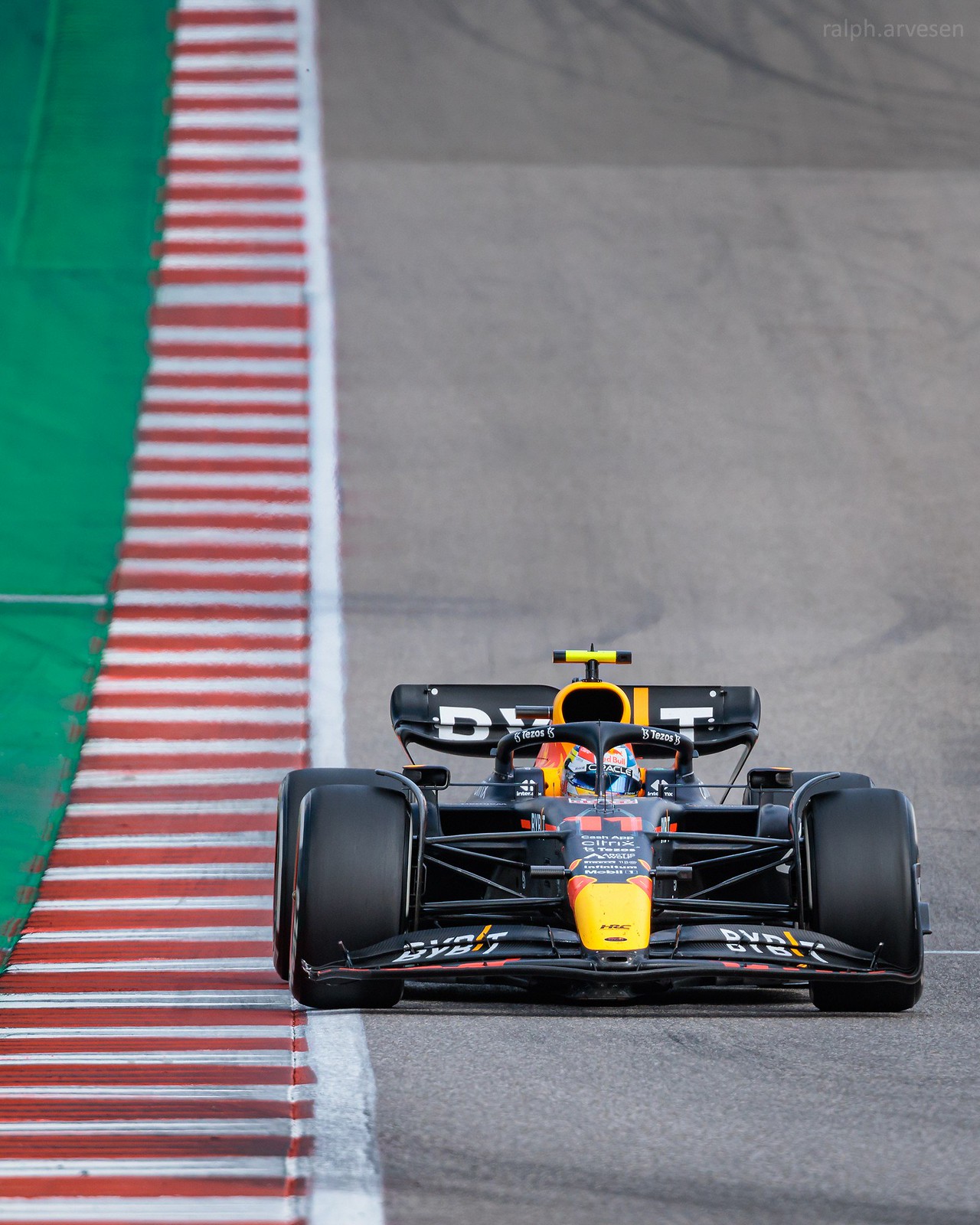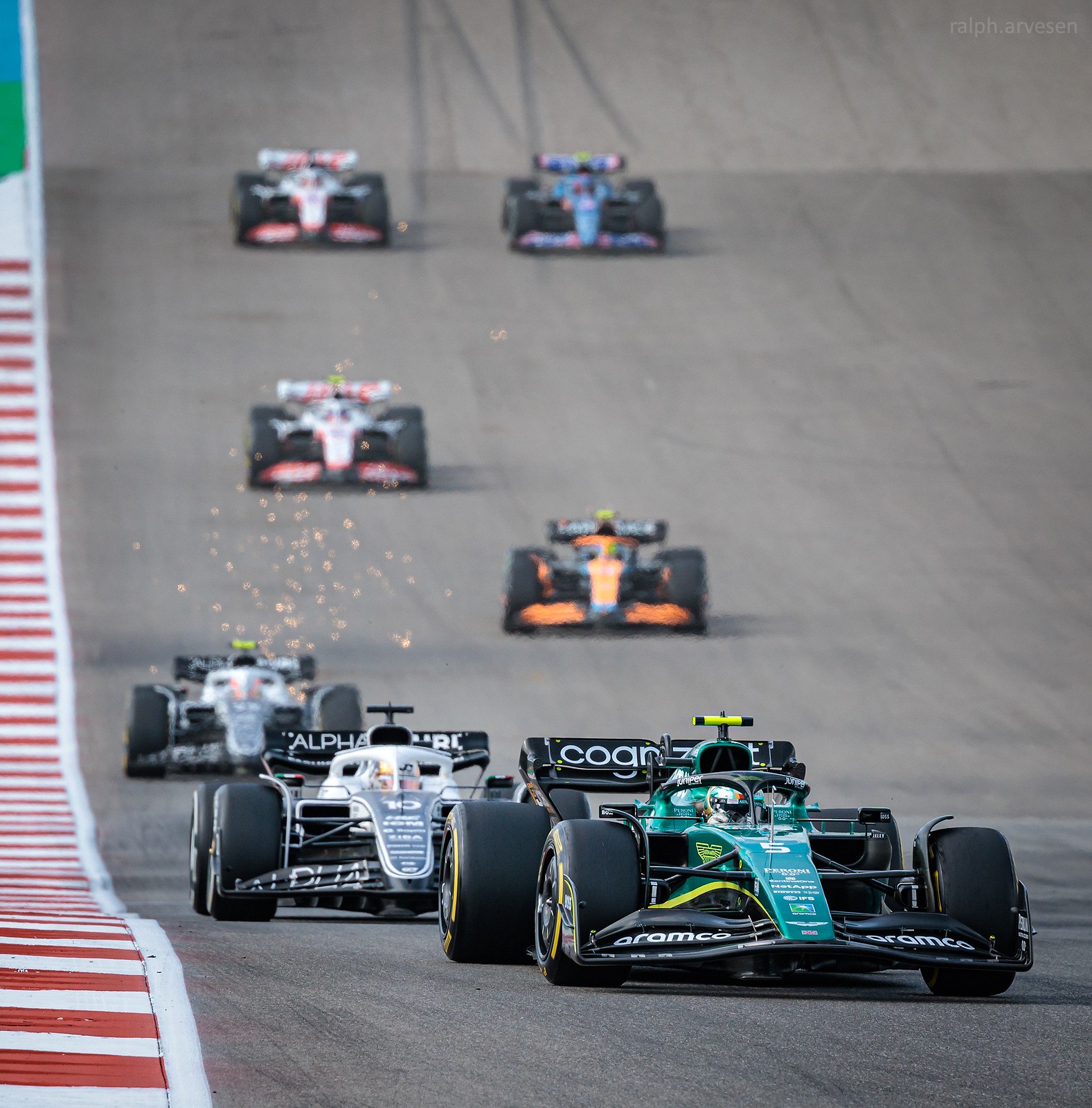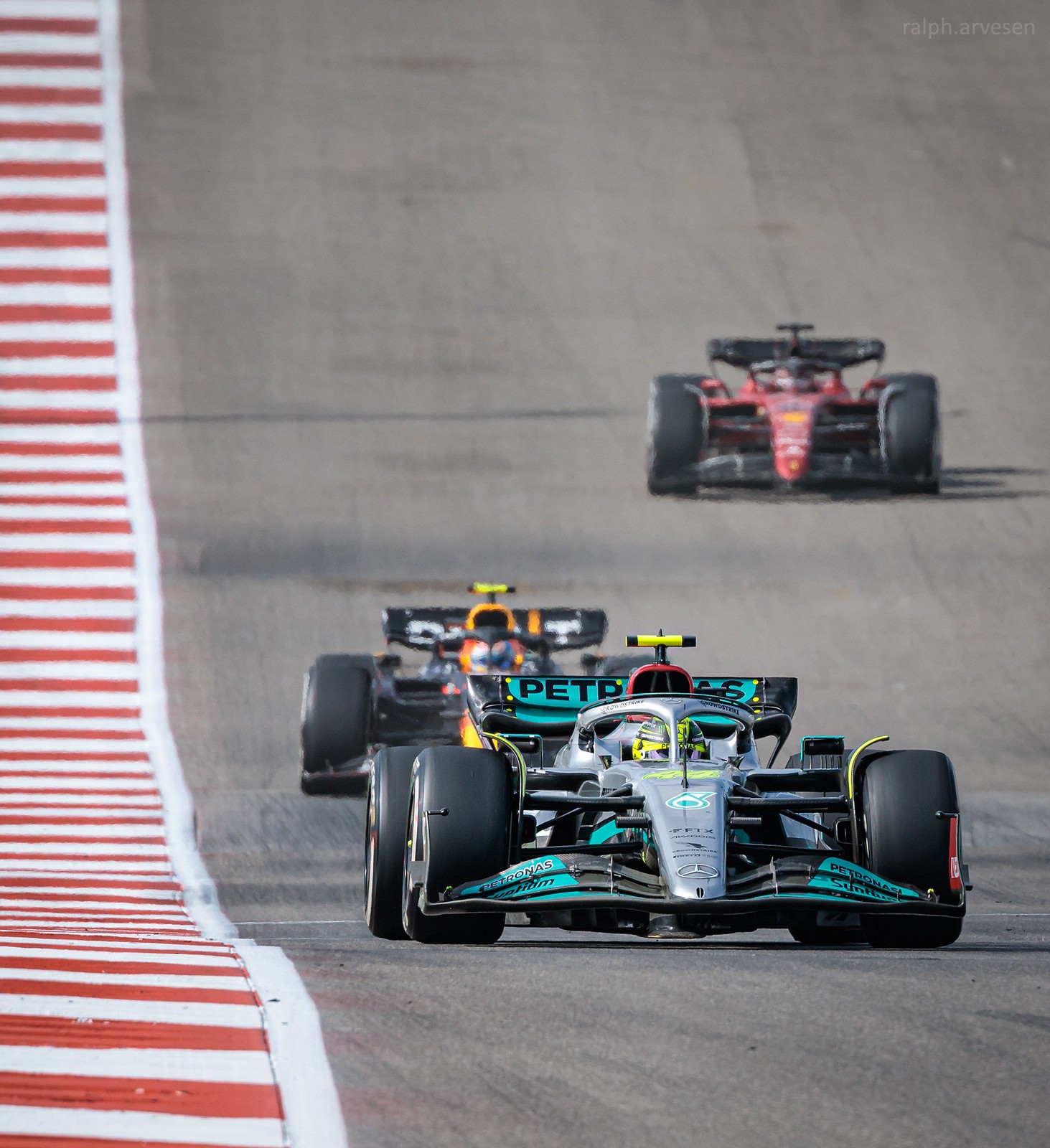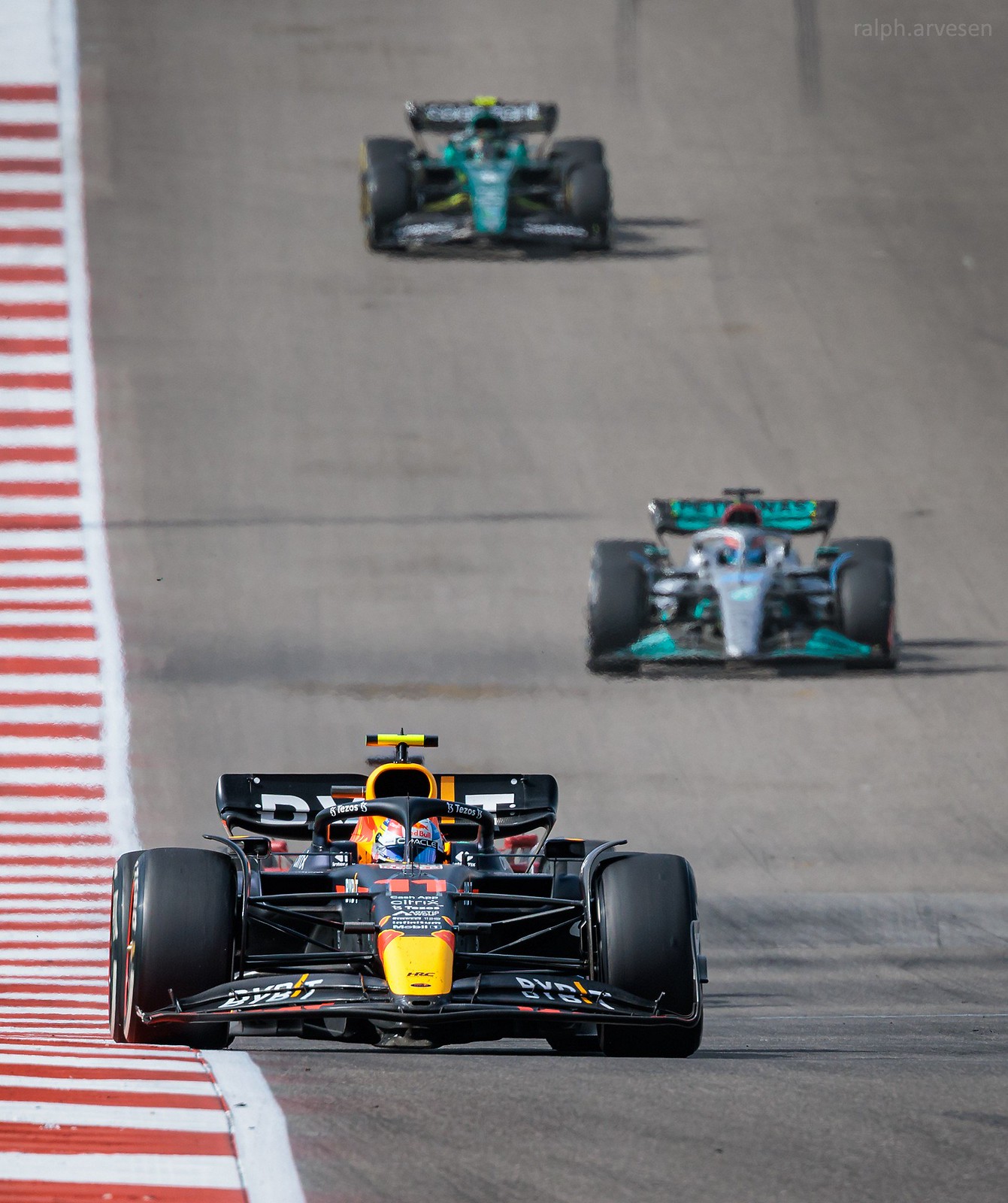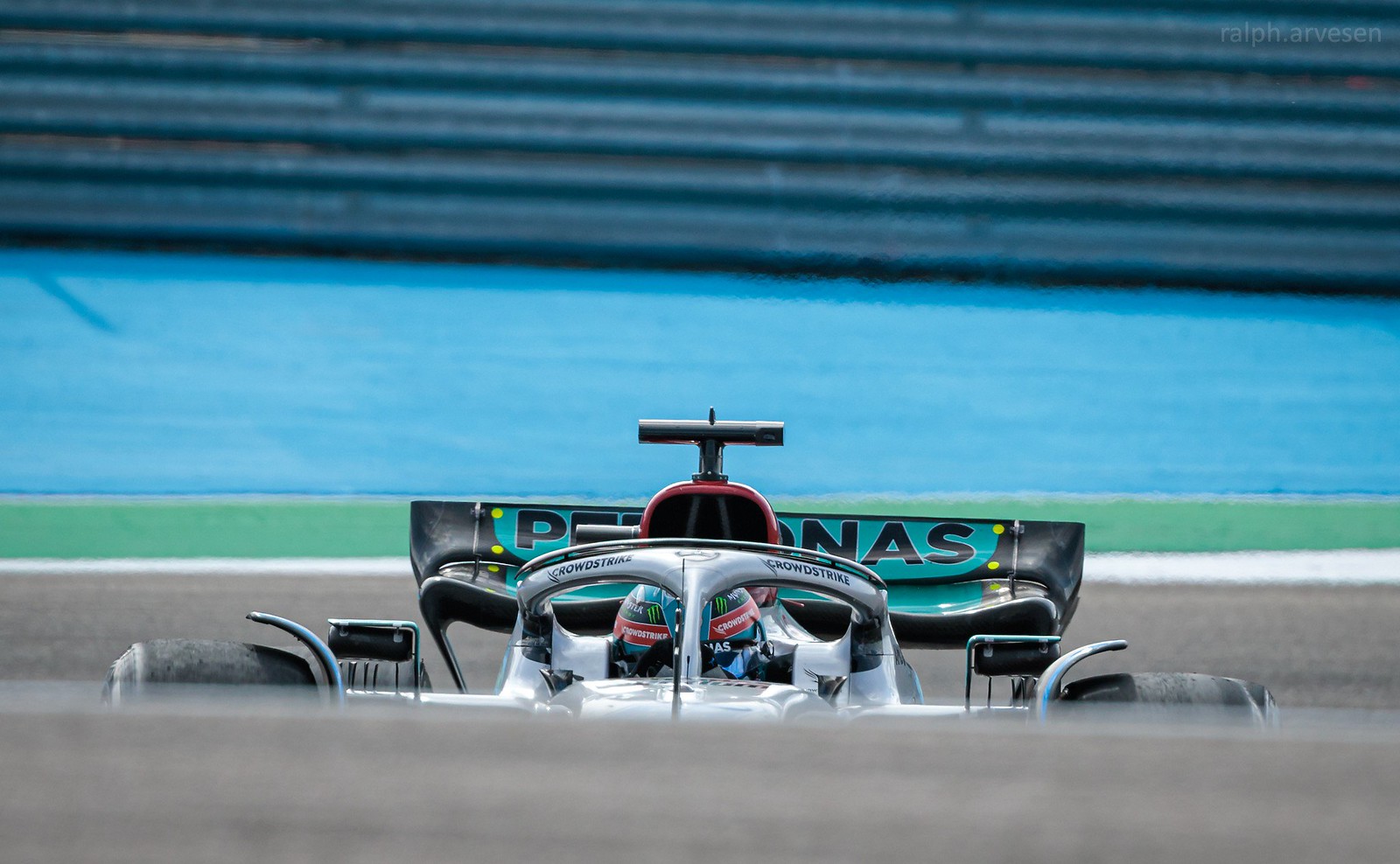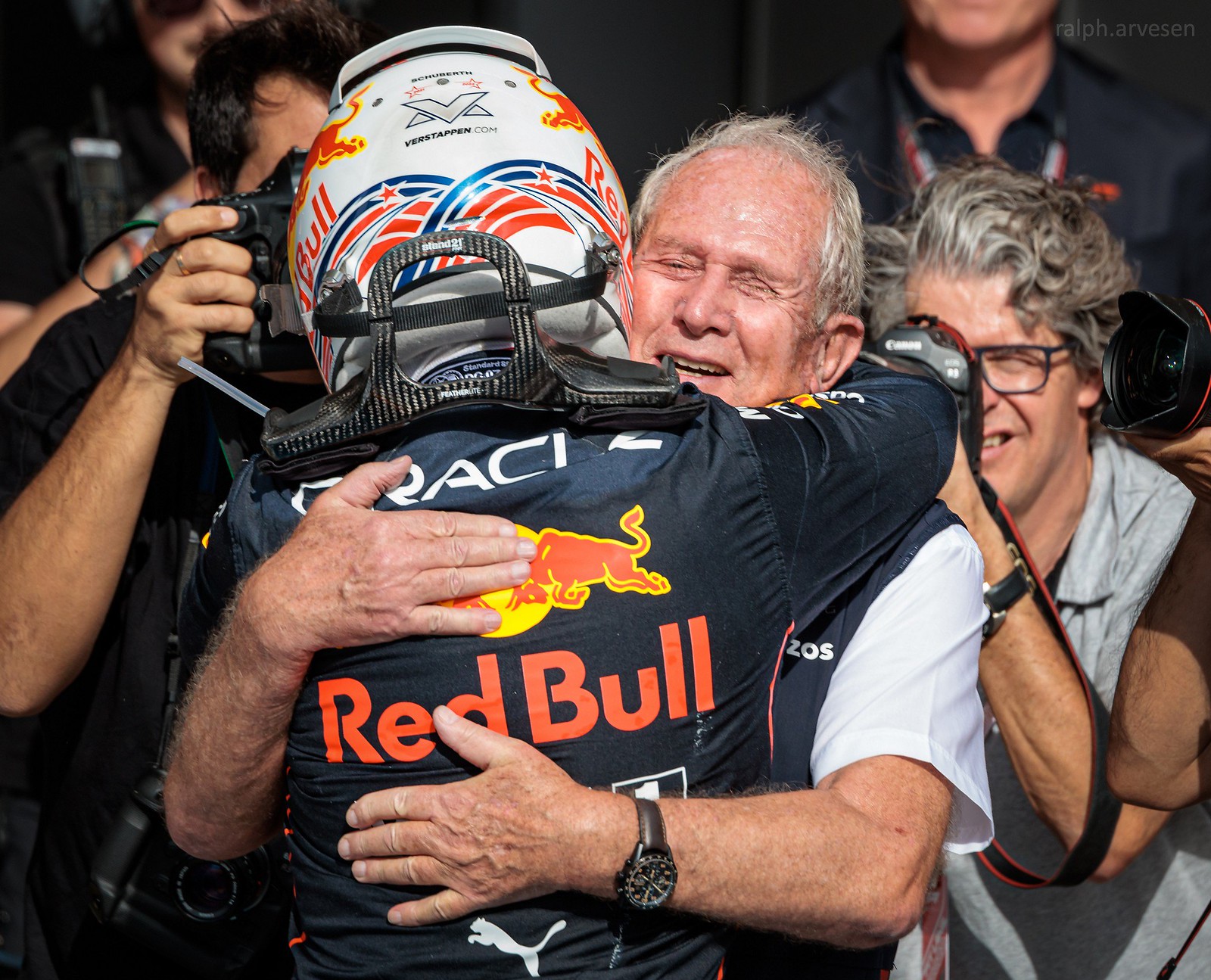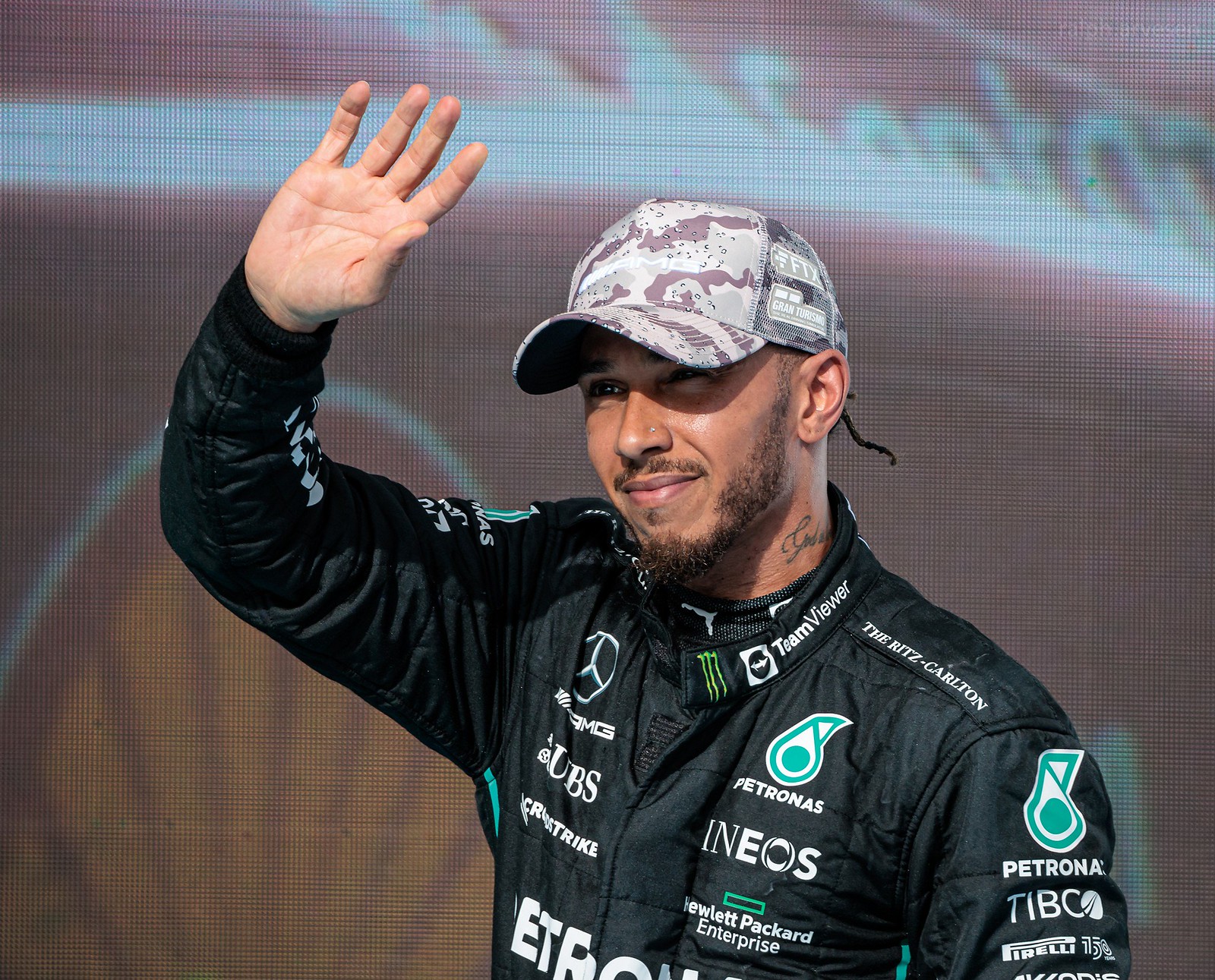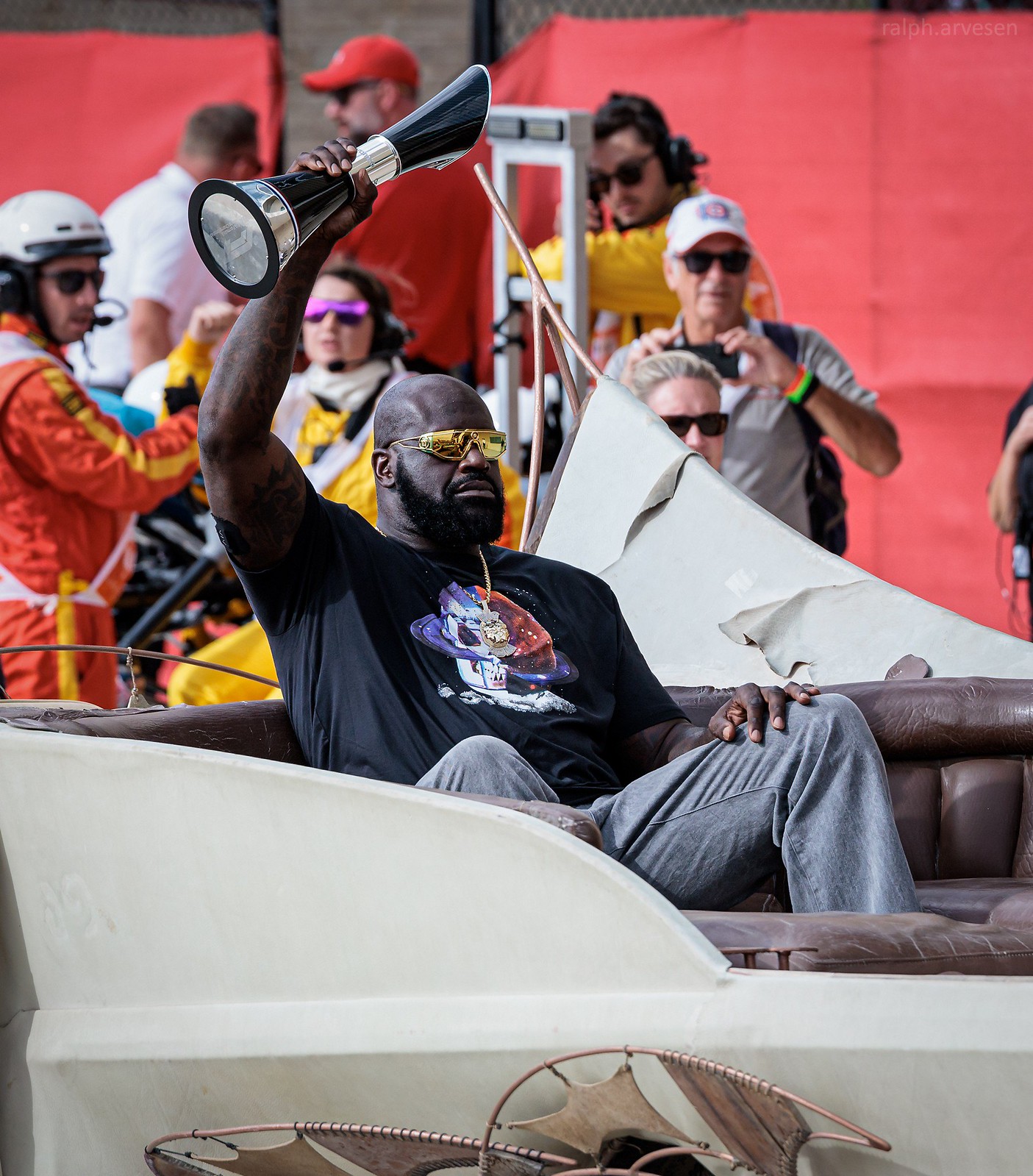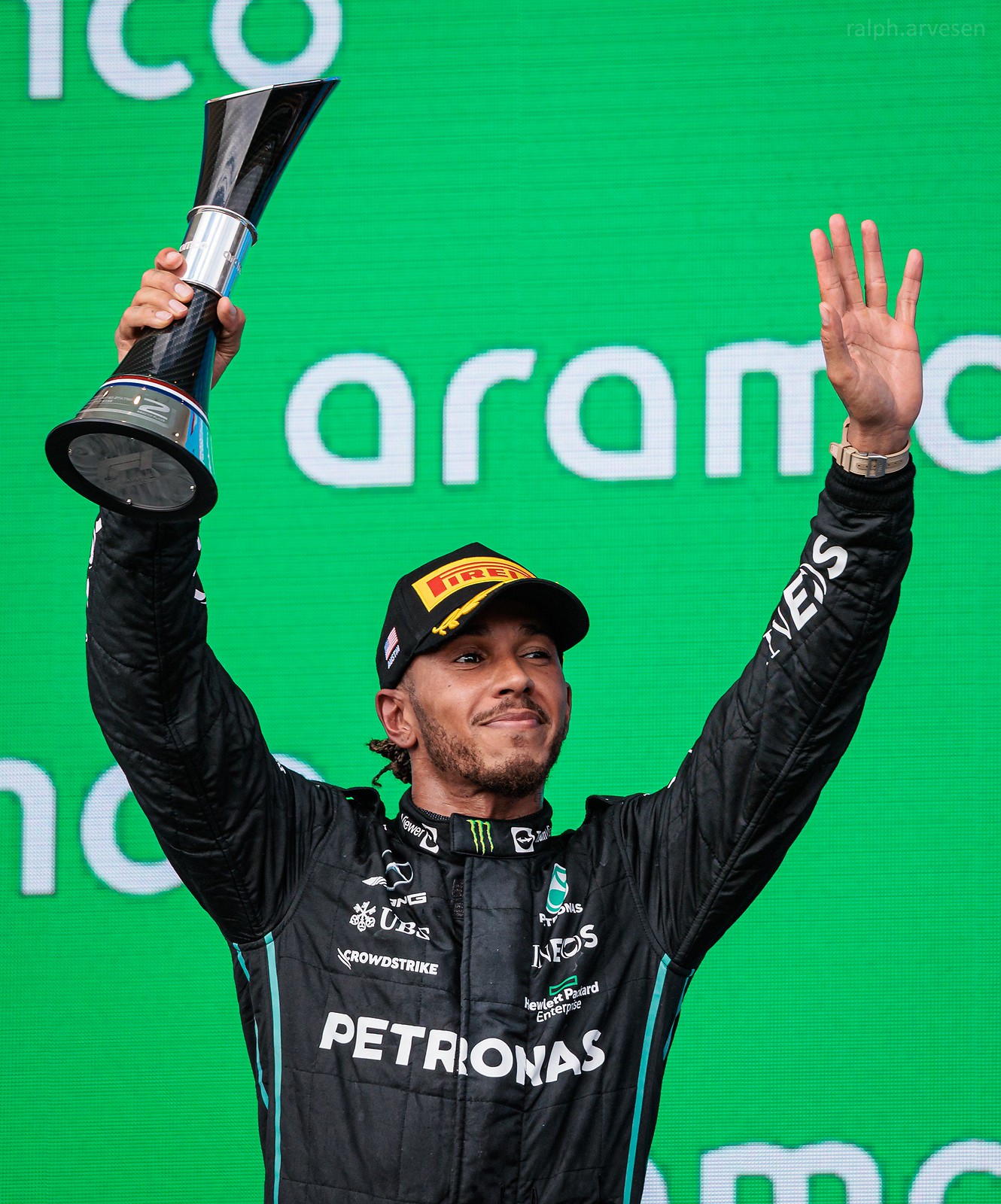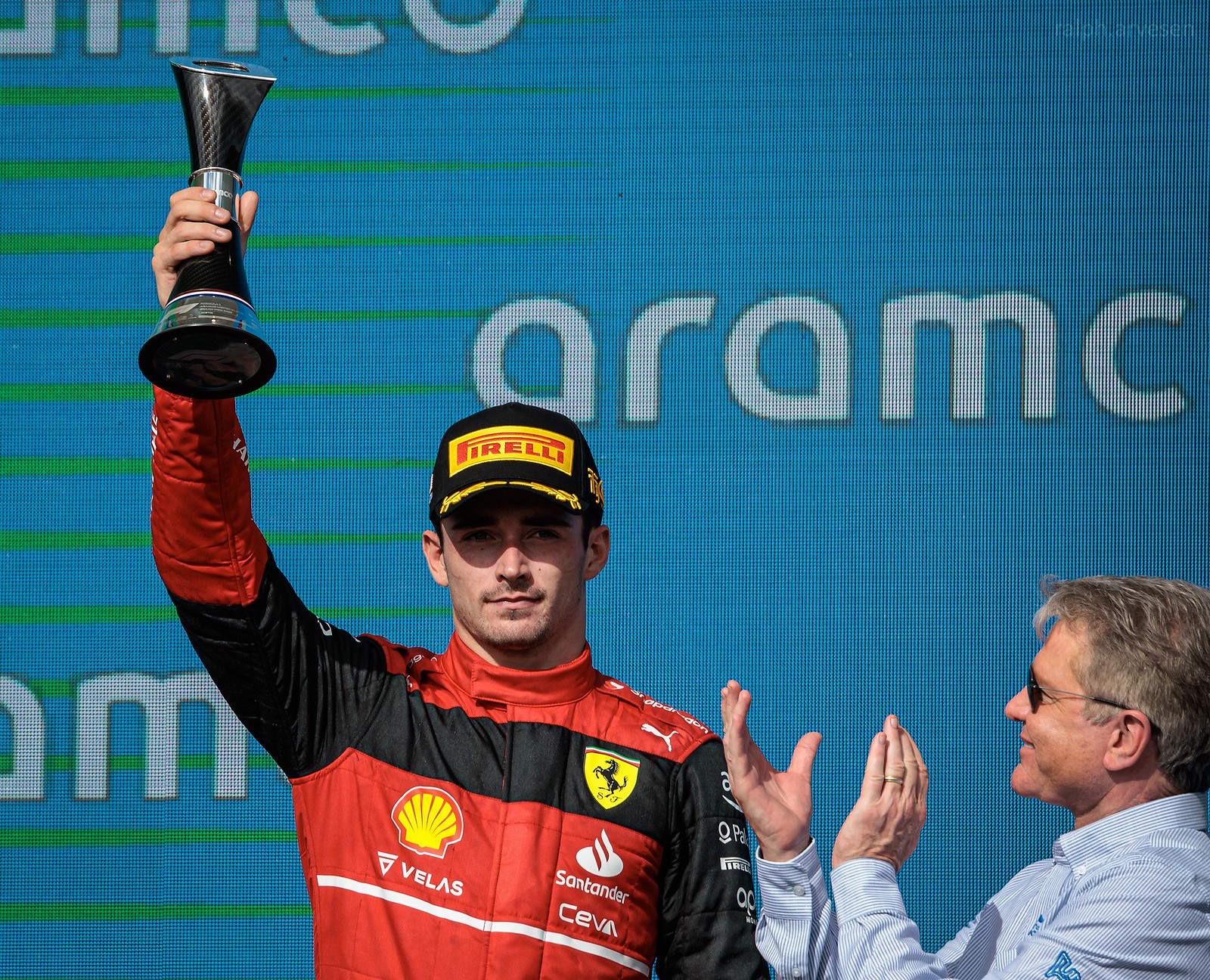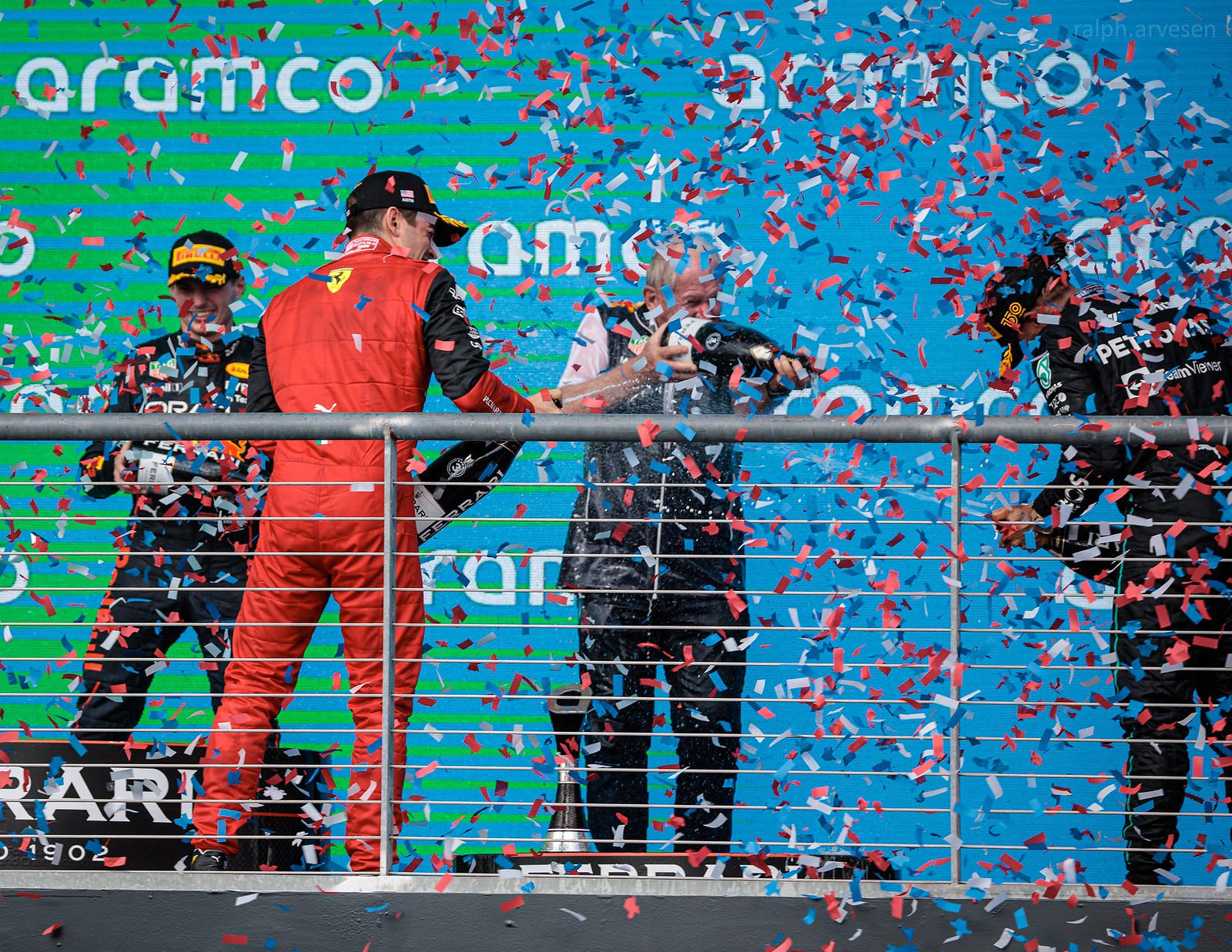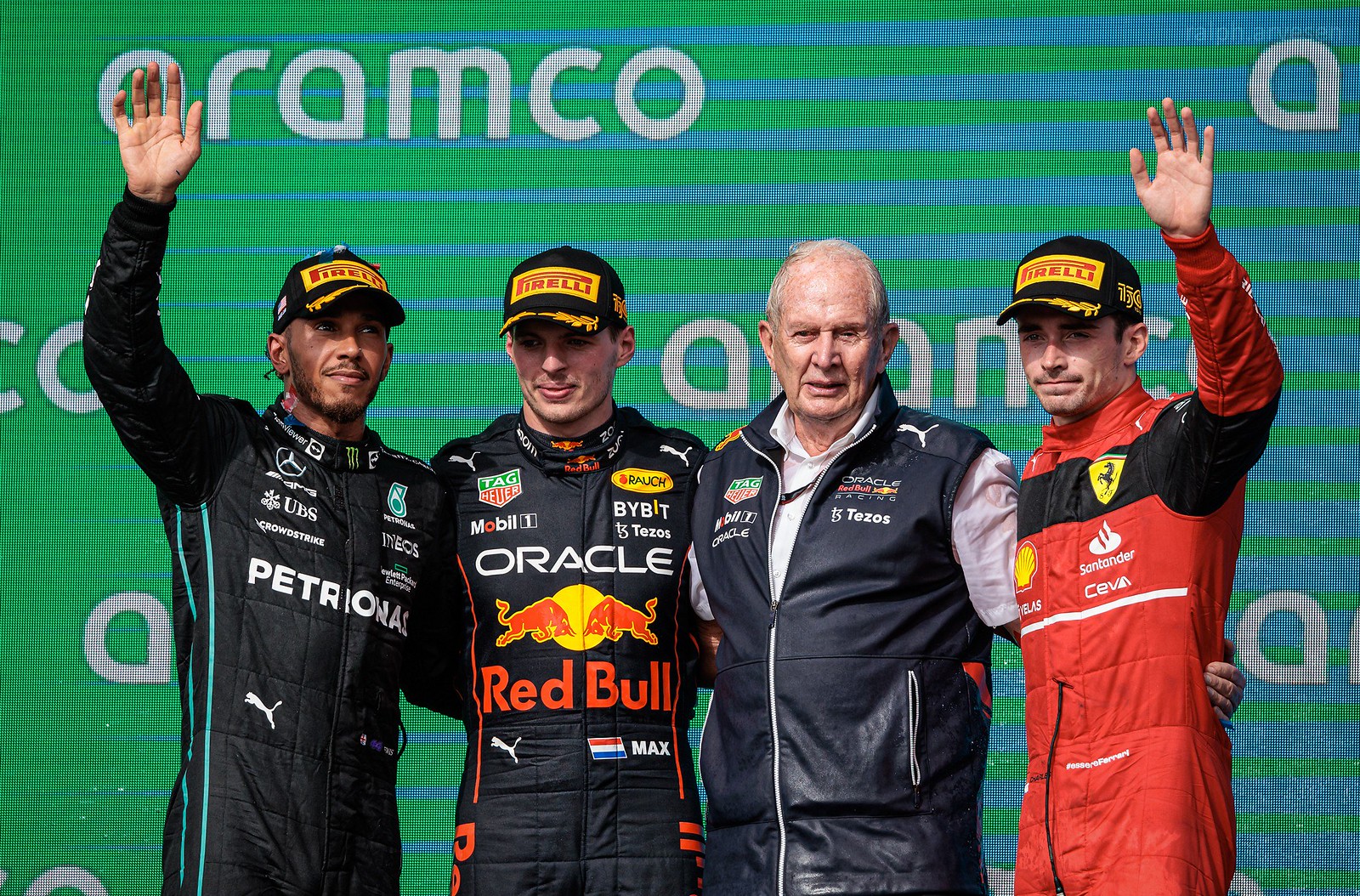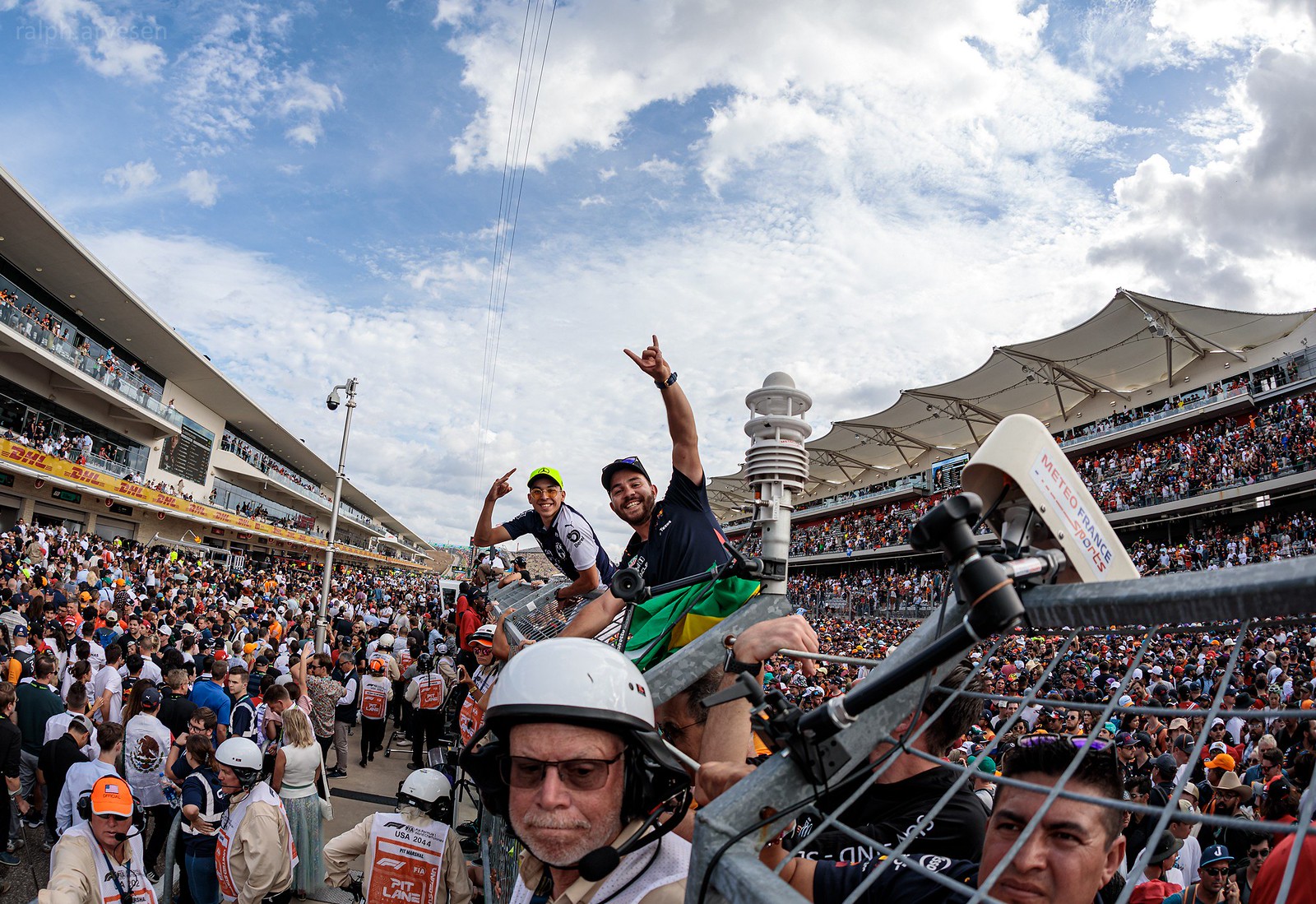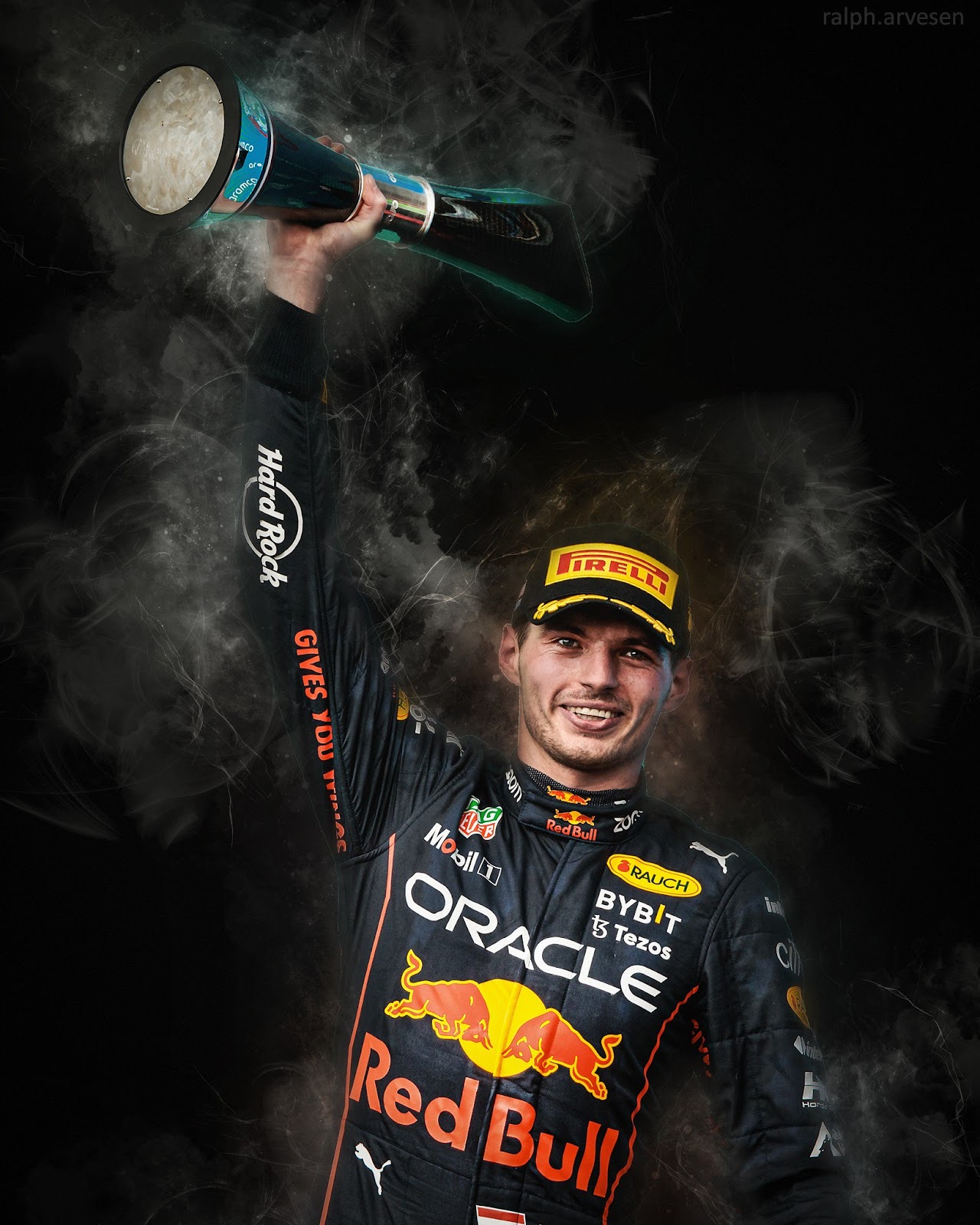
Formula 1 Aramco United States Grand Prix 2022 race at the Circuit of The Americas in Austin, Texas on October 23, 2022. (Photo: Ralph Arvesen)
Max Verstappen emerged victorious at the end of an action-packed United States Grand Prix, overhauling and fending off Lewis Hamilton in a tense finale, while his Red Bull team wrapped up their first constructors’ title since 2013. Verstappen’s record-equalling 13th win of the season, and the squad’s championship triumph, came a day after Red Bull co-founder and owner Dietrich Mateschitz passed away – a milestone fifth F1 constructors’ title for the Milton Keynes operation sparking emotional celebrations. Having moved into the lead at the start, avoiding the drama behind as Carlos Sainz and George Russell clashed at Turn 1, Verstappen had looked set for a comfortable victory at the Circuit of The Americas, dealing with multiple Safety Car restarts and managing his pace expertly.
But a slow final pit stop opened the door for Hamilton and the recovering Charles Leclerc, the reigning world champion having to pass both of them to take the chequered flag first – his move on Hamilton coming with just six laps remaining. Despite his sterling efforts, Hamilton had to settle for second place, with Mercedes’ wait for a 2022 victory continuing, while Leclerc salvaged a podium finish for Ferrari as the Italian team mathematically dropped out of contention for the constructors’ crown. Leclerc benefitted from a cheap stop under an early Safety Car – brought out by Valtteri Bottas’s spin into the gravel – to rise from P12 on the grid after his power unit changes, with Perez taking fourth after his own engine penalty.
Russell took a five-second time penalty for his incident with Sainz en route to fifth, pitting late on to set the fastest lap on soft tyres, having held enough of a window over sixth-placed McLaren driver Lando Norris. Fernando Alonso bounced back from an engine penalty and a dramatic collision with Lance Stroll midway through the race, which briefly sent him airborne, to claim seventh position, followed by Aston Martin’s Sebastian Vettel and the one-stopping Haas of Kevin Magnussen. Like Verstappen, Vettel’s efforts were dented by a slow final stop and, having initially held a strong points position, he had to fight his way back to eighth, passing Magnussen at the final corner on the final lap – earning the 'Driver of the Day' award in the process. However, a post-race 30-second penalty following a protest would ultimately drop Alonso to P15, as the drivers in between all moved up a spot.
AlphaTauri driver Yuki Tsunoda, who started at the back of the grid after an engine penalty, also used the drama to his advantage to take a point in 10th (later elevated to P9), ahead of Alpine’s Esteban Ocon (who started from the pits), Williams’ Alex Albon and Alfa Romeo’s Zhou Guanyu. After his qualifying woes, Pierre Gasly experienced another dramatic race, picking up a time penalty behind the Safety Car that was not served properly in the pits, leaving him to come home in 13th once Alonso's penalty had been applied. Mick Schumacher could not repeat team mate Magnussen’s points-scoring efforts on the more conventional two-stop strategy as he took P15 (later P14), with the McLaren of Daniel Ricciardo and Williams of Nicholas Latifi the final cars to finish behind Alonso. (Source: F1)
| Pos | No | Driver | Car | Laps | Time/Retired | Pts |
| 1 | 1 | Max Verstappen | RED BULL RACING RBPT | 56 | 1:42:11.687 | 25 |
| 2 | 44 | Lewis Hamilton | MERCEDES | 56 | +5.023s | 18 |
| 3 | 16 | Charles Leclerc | FERRARI | 56 | +7.501s | 15 |
| 4 | 11 | Sergio Perez | RED BULL RACING RBPT | 56 | +8.293s | 12 |
| 5 | 63 | George Russell | MERCEDES | 56 | +44.815s | 11 |
| 6 | 4 | Lando Norris | MCLAREN MERCEDES | 56 | +53.785s | 8 |
| 7 | 14 | Fernando Alonso | ALPINE RENAULT | 56 | +55.078s | 6 |
| 8 | 5 | Sebastian Vettel | ASTON MARTIN ARAMCO MERCEDES | 56 | +65.354s | 4 |
| 9 | 20 | Kevin Magnussen | HAAS FERRARI | 56 | +65.834s | 2 |
| 10 | 22 | Yuki Tsunoda | ALPHATAURI RBPT | 56 | +70.919s | 1 |
| 11 | 31 | Esteban Ocon | ALPINE RENAULT | 56 | +72.875s | 0 |
| 12 | 24 | Zhou Guanyu | ALFA ROMEO FERRARI | 56 | +76.164s | 0 |
| 13 | 23 | Alexander Albon | WILLIAMS MERCEDES | 56 | +80.057s | 0 |
| 14 | 10 | Pierre Gasly | ALPHATAURI RBPT | 56 | +81.763s | 0 |
| 15 | 47 | Mick Schumacher | HAAS FERRARI | 56 | +84.490s | 0 |
| 16 | 3 | Daniel Ricciardo | MCLAREN MERCEDES | 56 | +90.487s | 0 |
| 17 | 6 | Nicholas Latifi | WILLIAMS MERCEDES | 56 | +103.588s | 0 |
| NC | 18 | Lance Stroll | ASTON MARTIN ARAMCO MERCEDES | 21 | DNF | 0 |
| NC | 77 | Valtteri Bottas | ALFA ROMEO FERRARI | 16 | DNF | 0 |
| NC | 55 | Carlos Sainz | FERRARI | 1 | DNF | 0 |
F1
Formula One (also known as Formula 1 or F1) is the highest class of international racing for open-wheel single-seater formula racing cars sanctioned by the Fédération Internationale de l'Automobile (FIA). The World Drivers' Championship, which became the FIA Formula One World Championship in 1981, has been one of the premier forms of racing around the world since its inaugural season in 1950. The word formula in the name refers to the set of rules to which all participants' cars must conform. A Formula One season consists of a series of races, known as Grands Prix, which take place worldwide on both purpose-built circuits and closed public roads.
A points system is used at Grands Prix to determine two annual World Championships: one for drivers, the other for constructors. Each driver must hold a valid Super License, the highest class of racing license issued by the FIA. The races must run on tracks graded "1" (formerly "A"), the highest grade-rating issued by the FIA.
Formula One cars are the fastest regulated road-course racing cars in the world, owing to very high cornering speeds achieved through the generation of large amounts of aerodynamic downforce. Much of this downforce is generated by front and rear wings, which have the side effect of causing severe turbulence behind each car. The turbulence reduces the downforce generated by a car following directly behind, making it hard to overtake. Major changes to the cars for the 2022 season has seen greater use of ground effect aerodynamics, and modified wings to reduce the turbulence behind the cars, with the goal of making overtaking easier. The cars are dependent on electronics and aerodynamics, suspension and tires. Traction control, launch control, and automatic shifting, plus other electronic driving aids, were first banned in 1994. They were briefly reintroduced in 2001, and have more recently been banned since 2004 and 2008, respectively.
Circuit of the Americas History
This is the first circuit in the US to be purpose-built for Formula One. Both the race and the circuit were proposed in 2010 by promoter Tavo Hellmund and World Champion motorcyclist Kevin Schwantz. Assistance was provided by the Hermann Tilke group, and construction started later that year.
The circuit relies on the State of Texas to fund the $25 million fee charged by Formula One to hold the race every year. For FY2016, a conservative faction in the Texas state legislature proposed a 50% reduction in the contribution of the state to that fee, which would in effect have forced the race to be cancelled, or at least dropped to every-other-year status. That proposal was eventually voted down, but the specter of future attempts by the extremists is omnipresent.
In February 2022, the contract to host the United States Grand Prix at COTA was extended for an additional 5 years through the 2026 season.
Circuit of the Americas Layout
The circuit is built on hilly range land, about 10 miles southeast of Austin. It runs counter-clockwise, placing unusual stress loads on the drivers. The course has four basic sections: the 0.6 km start/finish strait, with a sharp uphill section ending in a 135° lefthander; an eight turn sequence inspired by the Maggotts-Becketts-Chapel section of Silverstone; another sharp hairpin leading onto a 1.1 km back straight; and a final series of tight corners that includes a near replica of turn 8 at Istanbul Park (but taken in the opposite direction).
Inside the turn 8 replica (known here as turns 17 and 18) is an amphitheater, designed for crowds up to 15,000, but somehow they squeezed in 80,000 fans for a Taylor Swift concert, the night before the 2016 United States Grand Prix. Immediately behind the amphitheater stage is a 77 meter (253 ft) tall observation tower and centerpiece, giving views of the track and all of the Austin metro area.
In between turns six and seven, a pair of short connecting roads create smaller courses for testing and lower formulae. With these roads, it is possible for two separate groups to hold events or conduct testing simultaneously.
The track configuration has never changed since the track opened. However, a concert stage for larger acts has now been set up along the back straight, facing the infield and the grandstands above Turn 10. This configuration is capable of accommodating 100,000 fans.
F1
web | facebook | twitter | instagram
Circuit of The Americas
web | facebook | twitter | instagram
Photos by Ralph Arvesen
web | facebook | twitter | instagram


